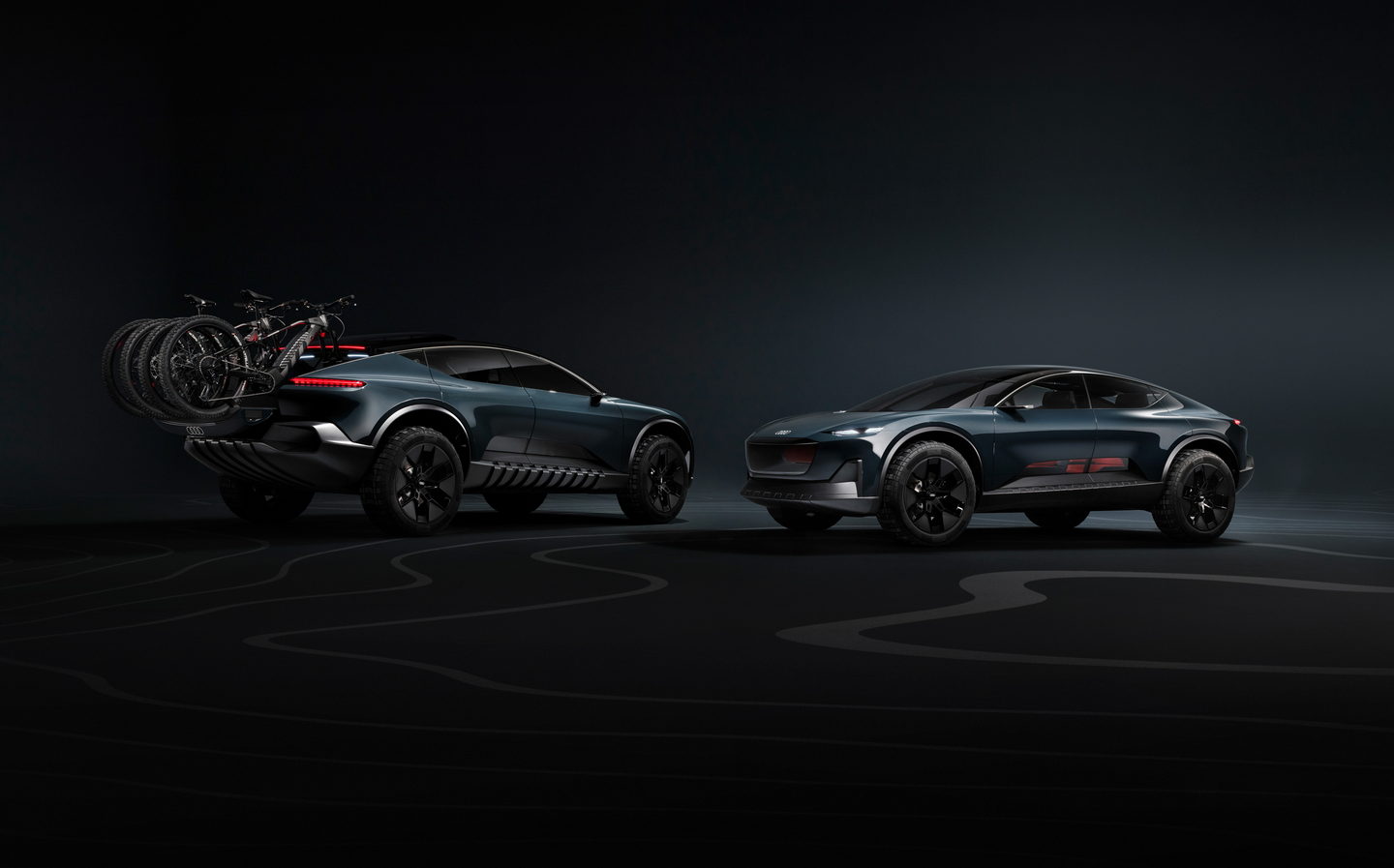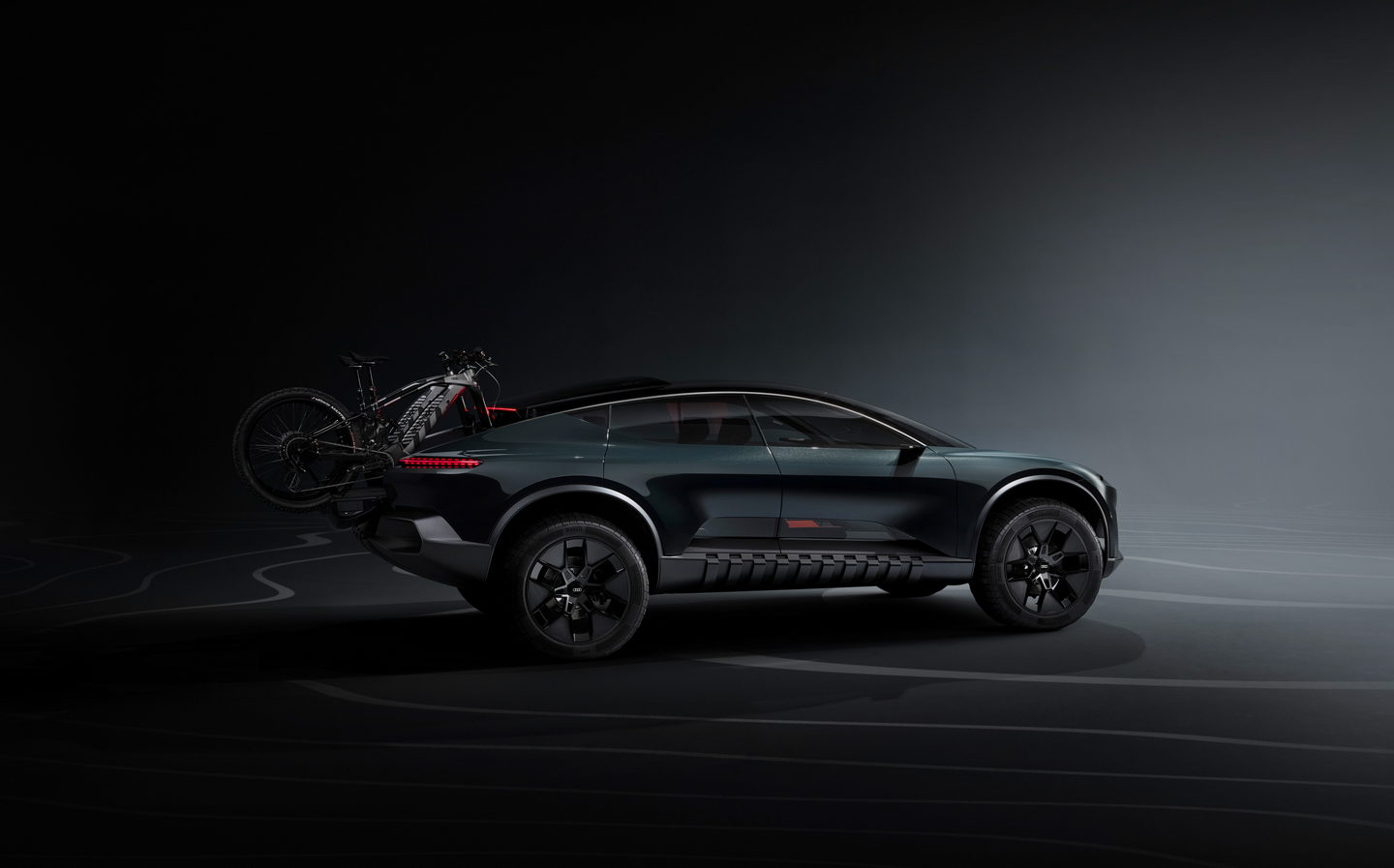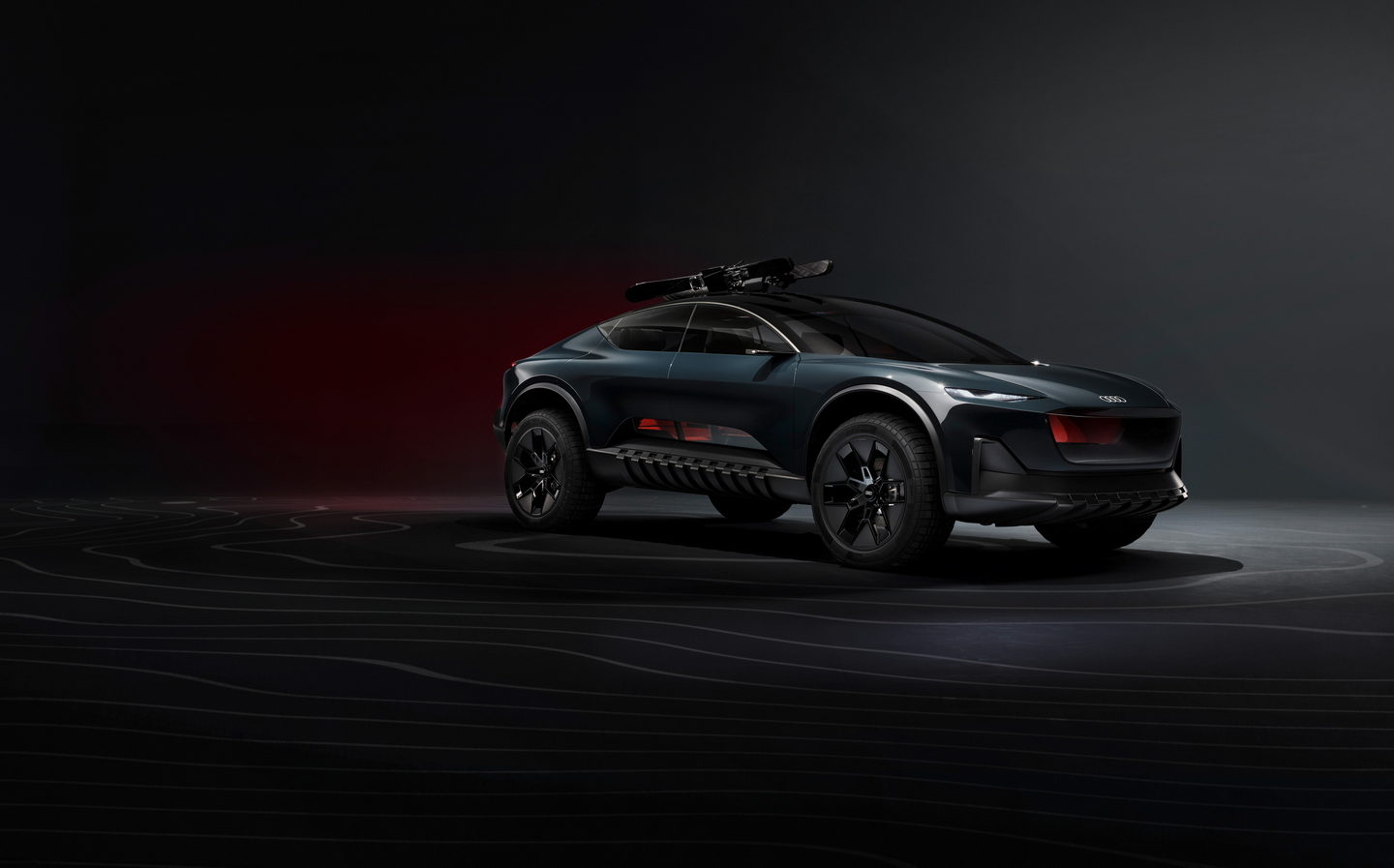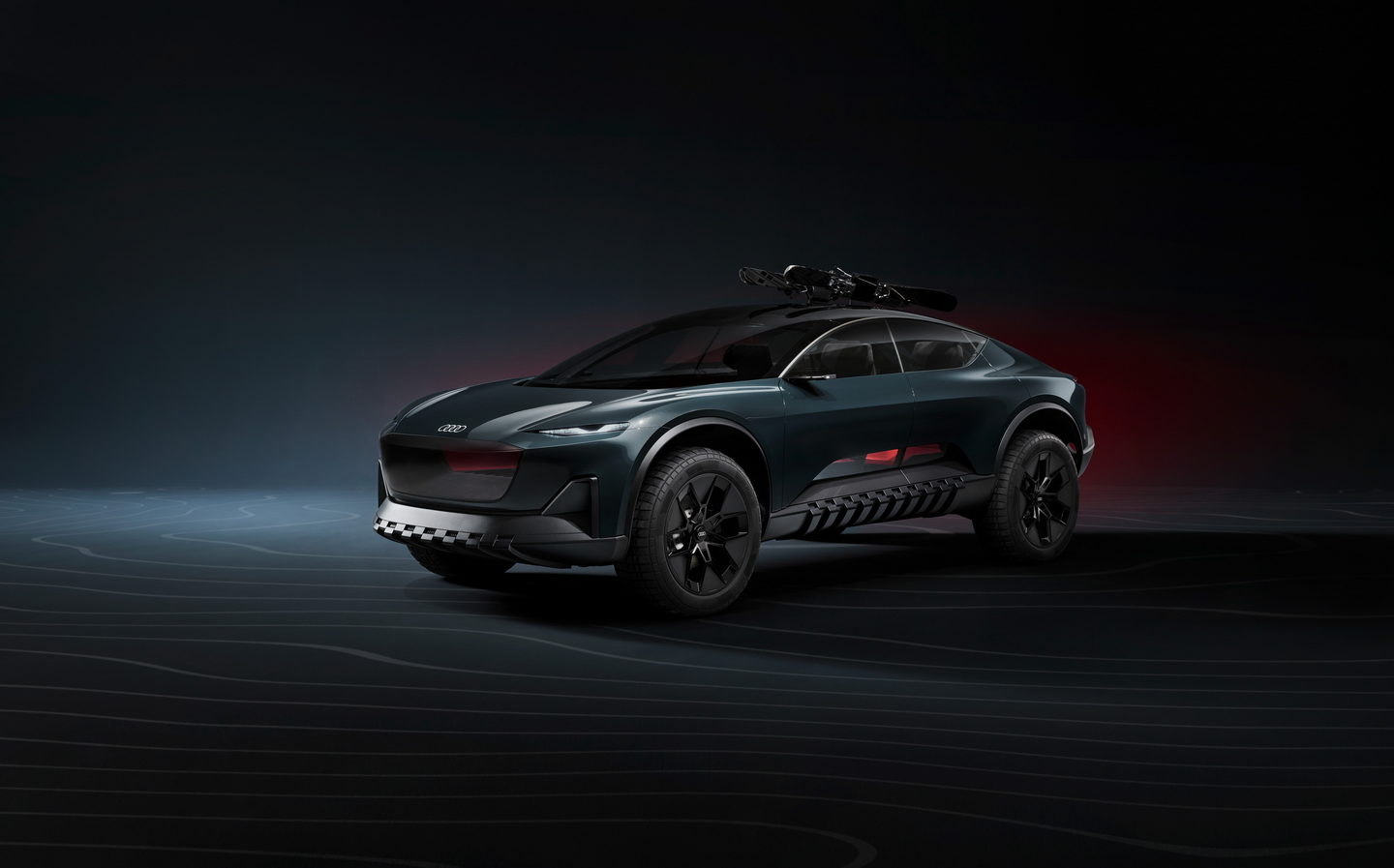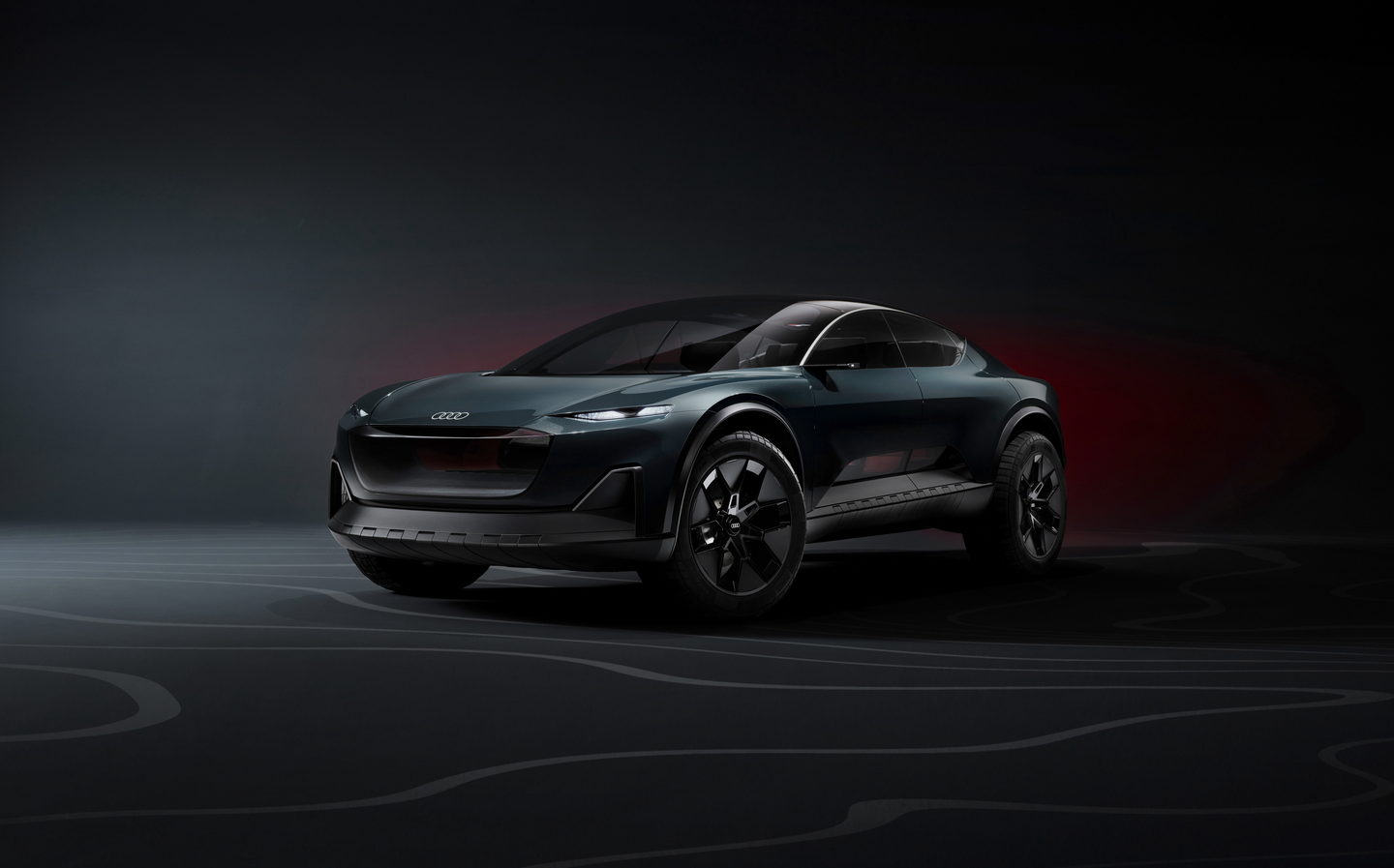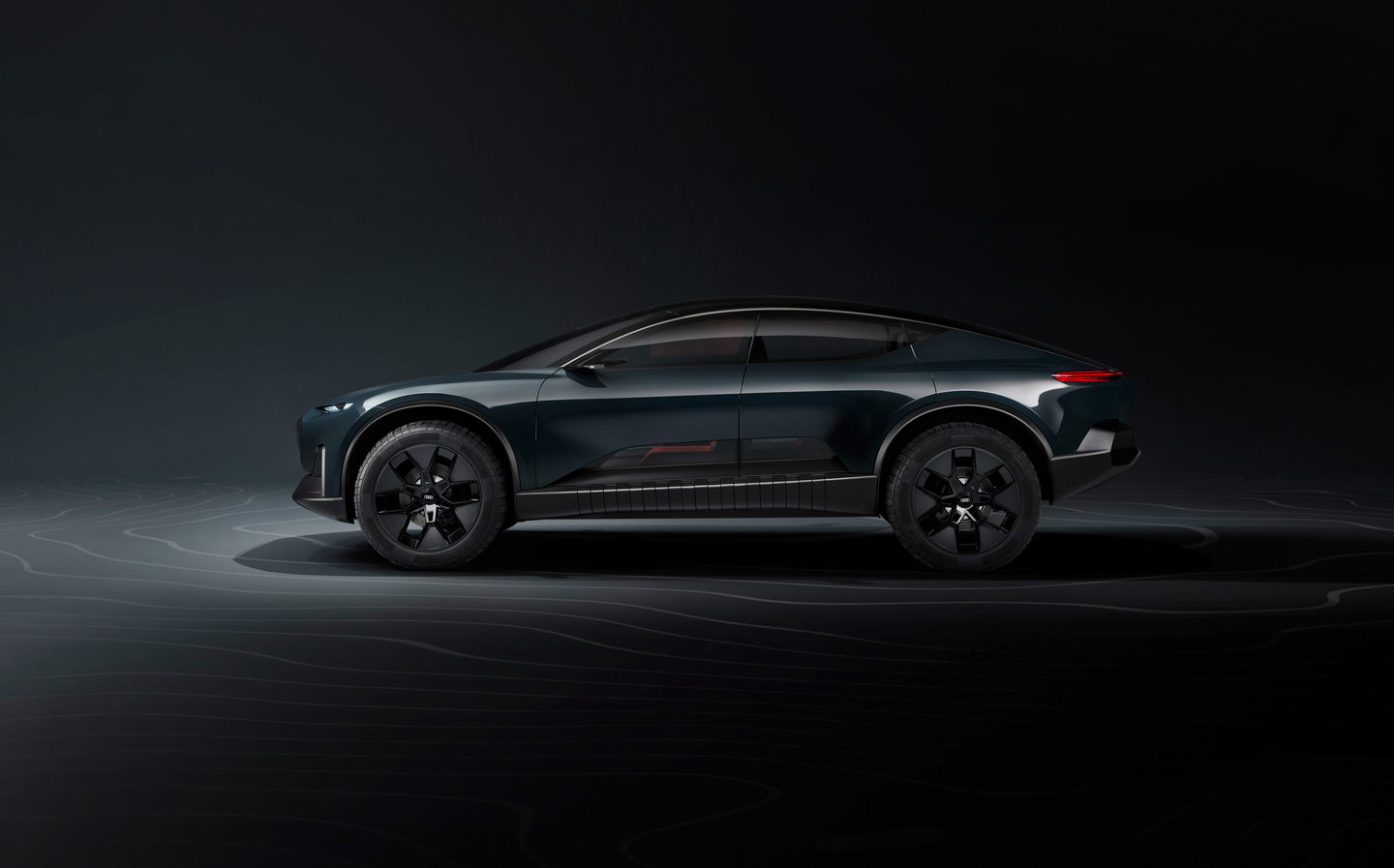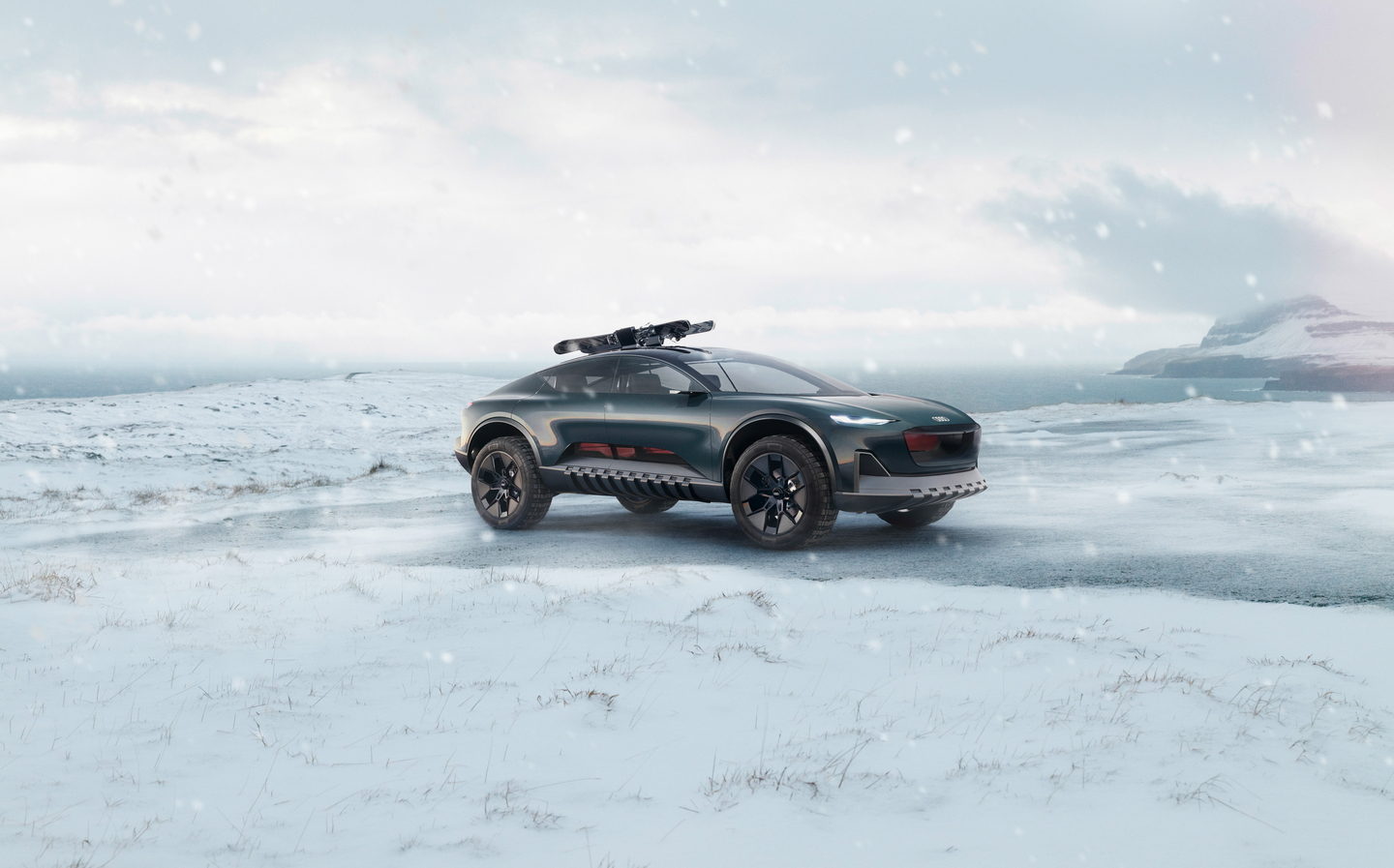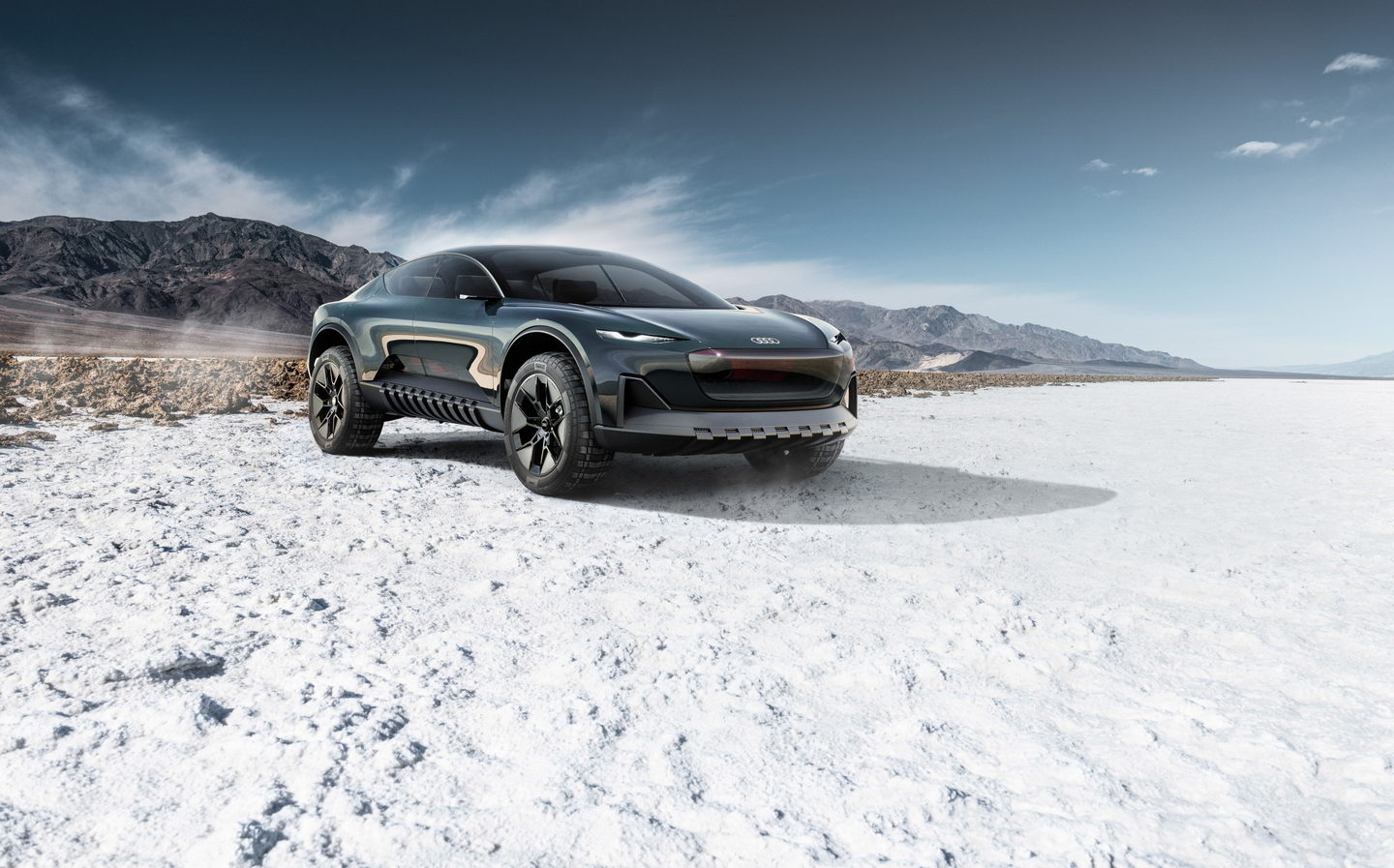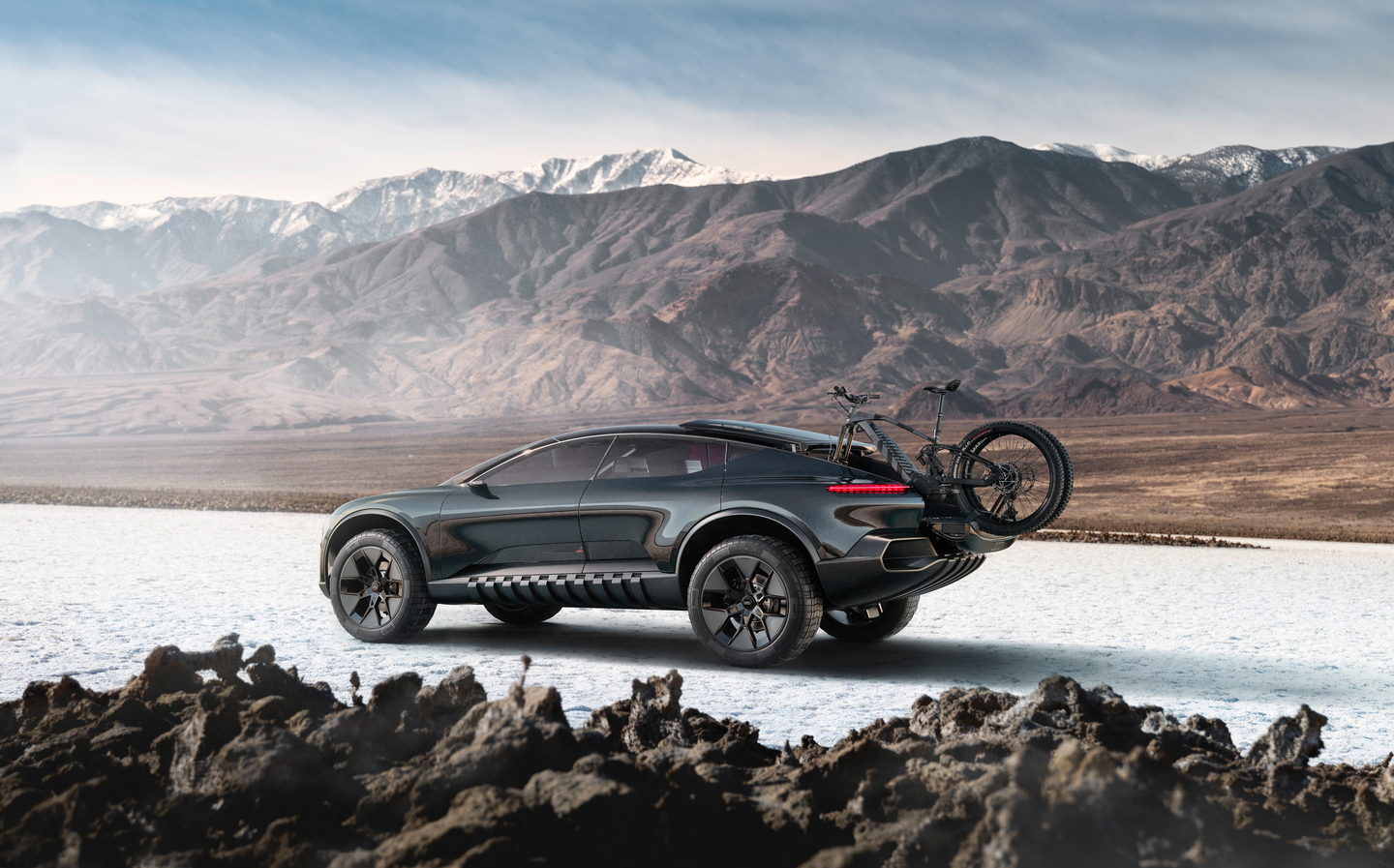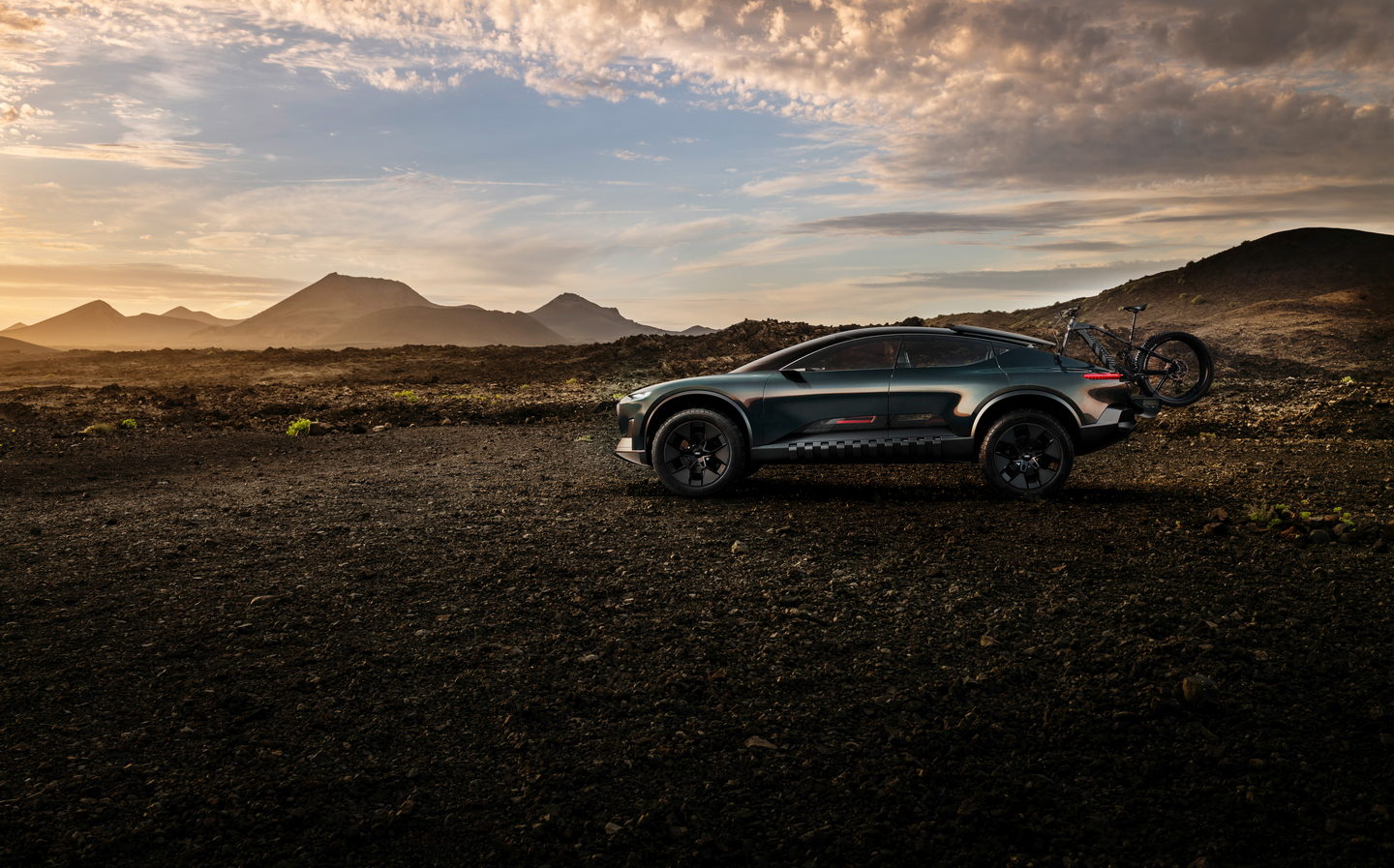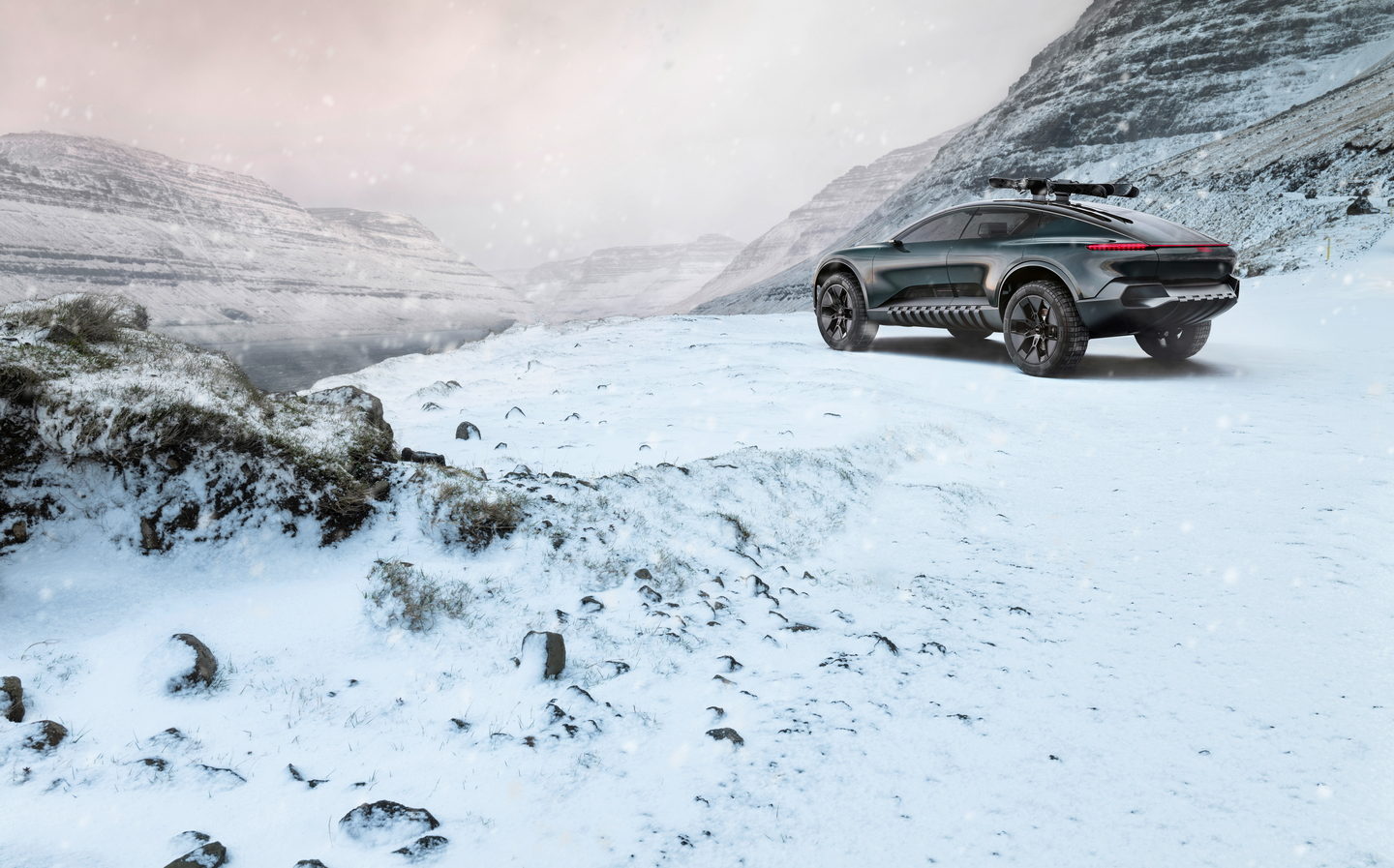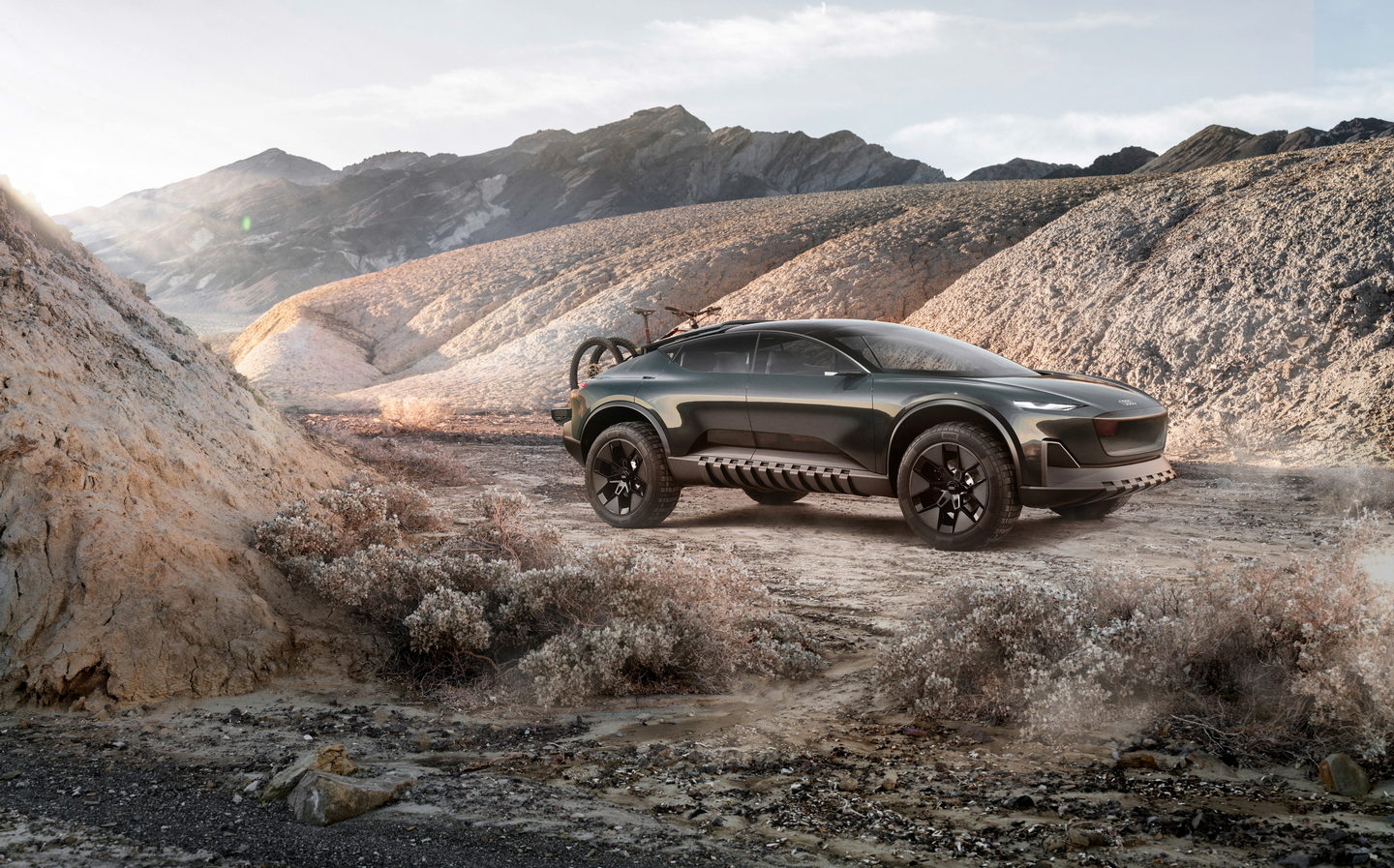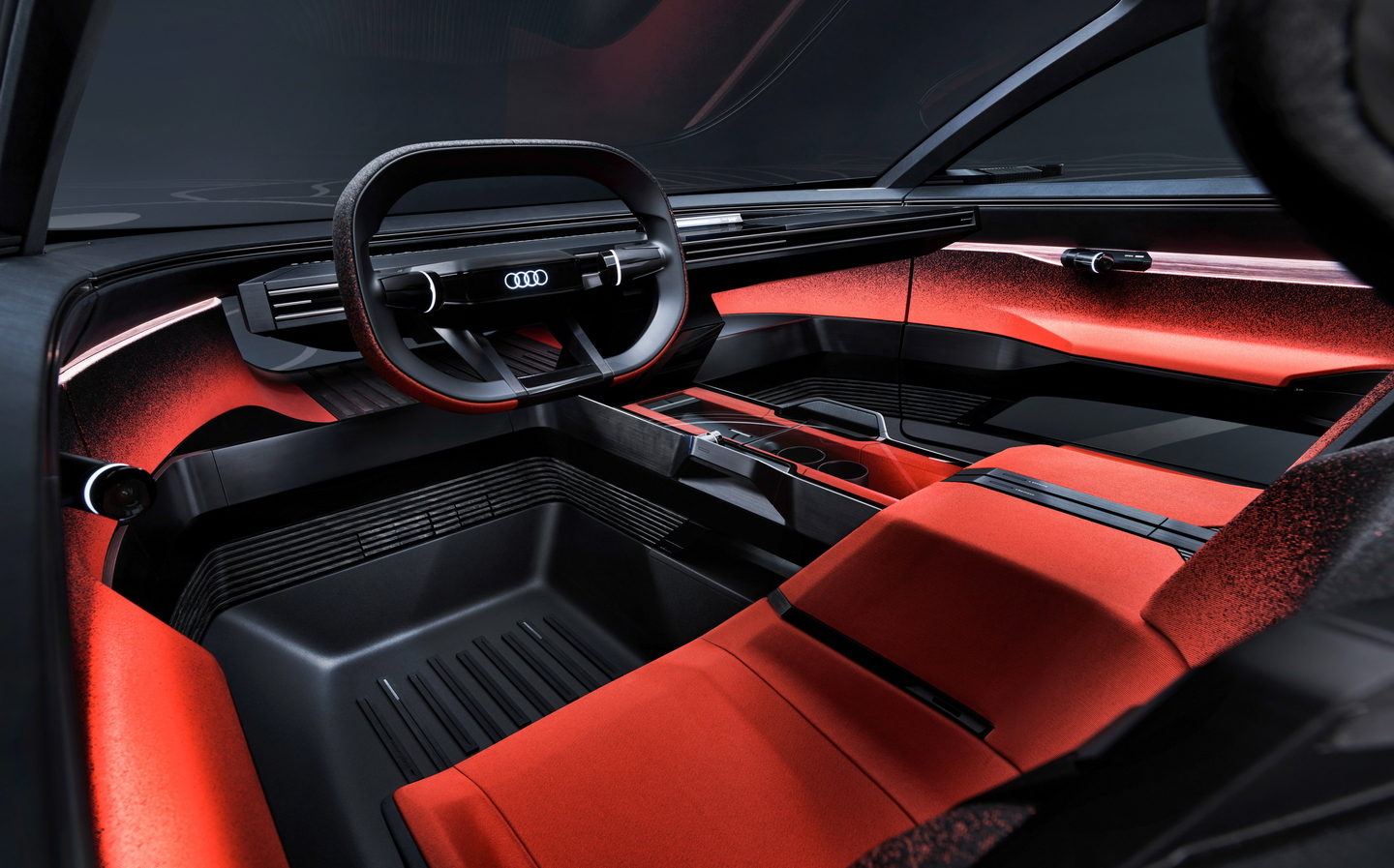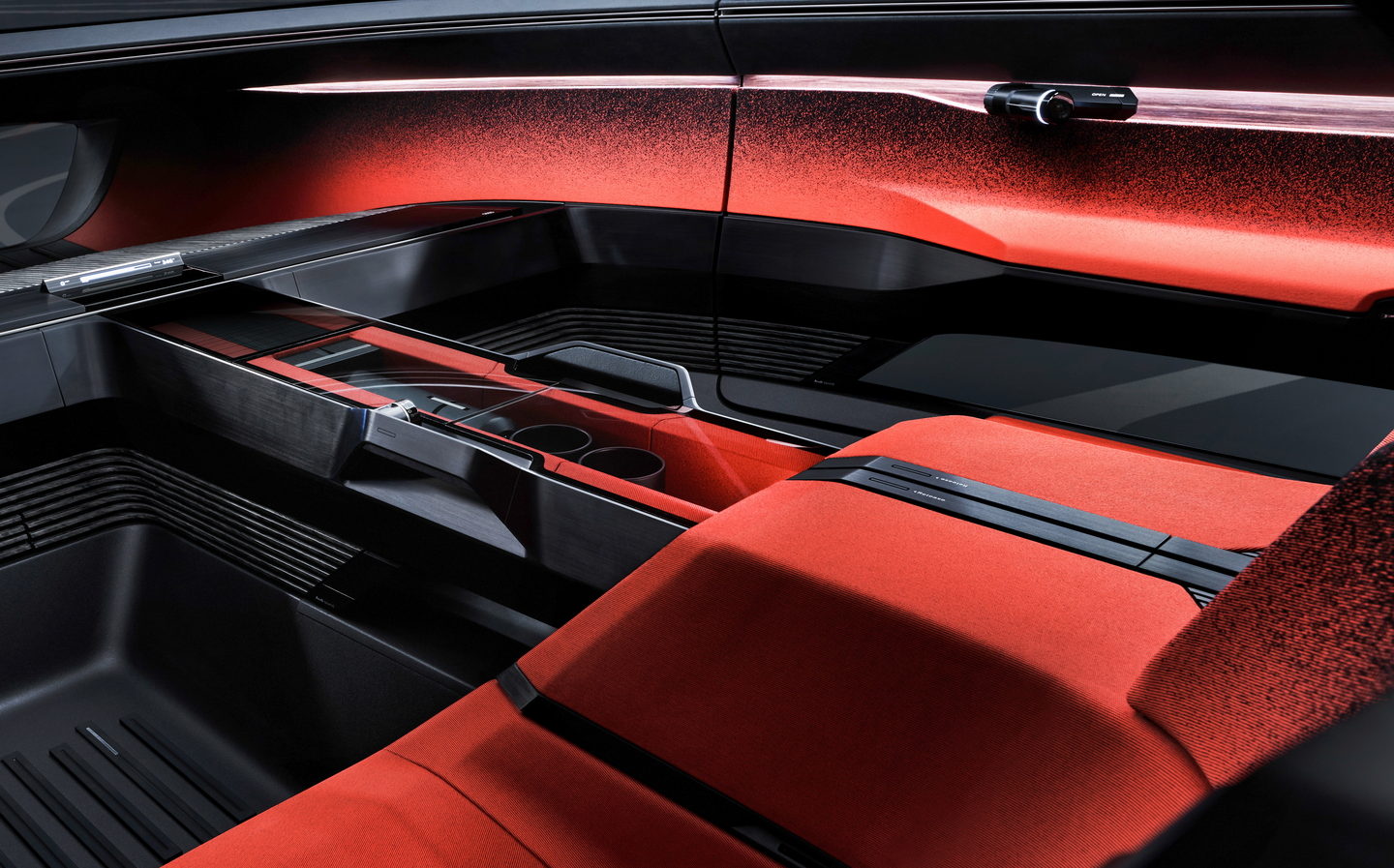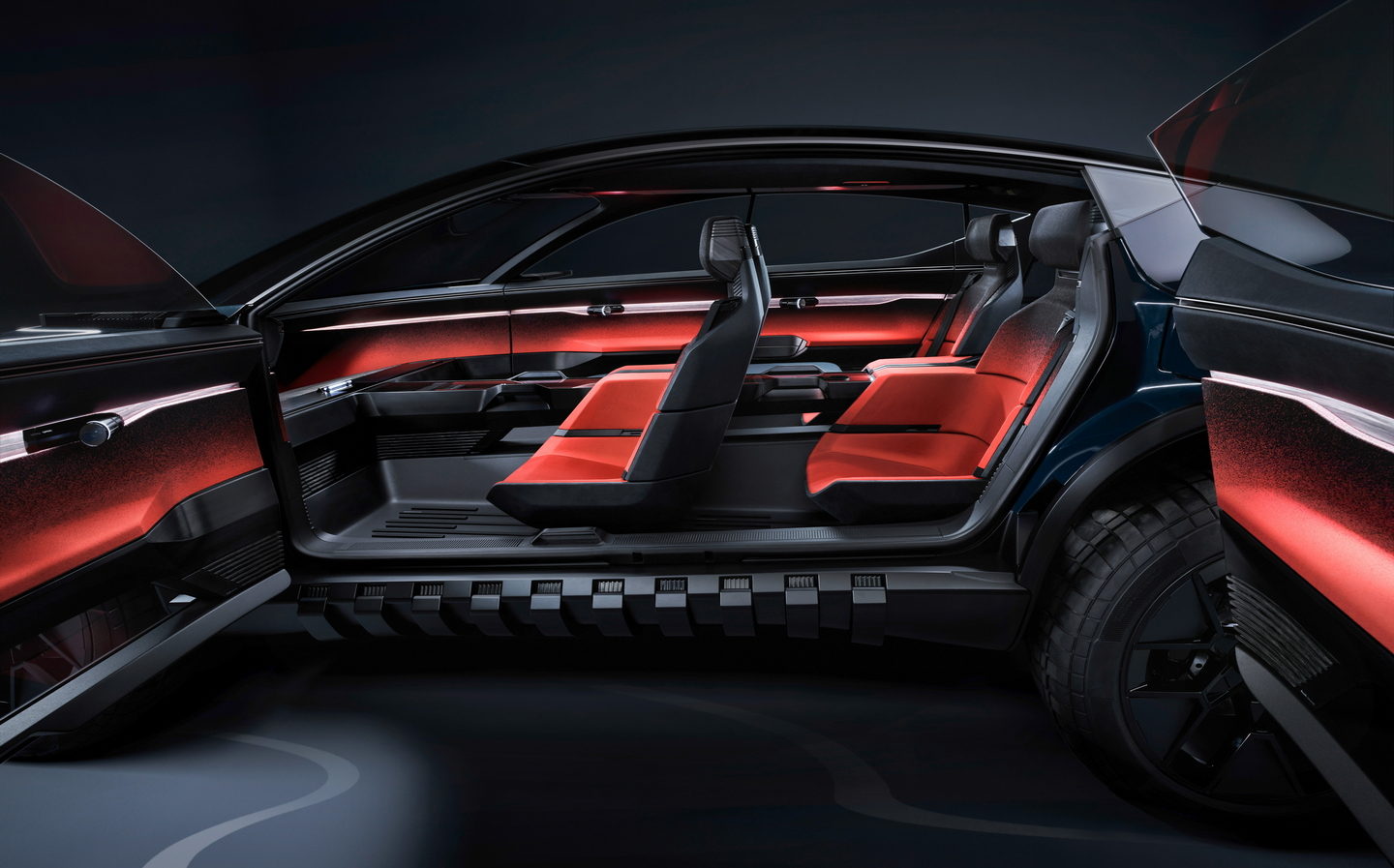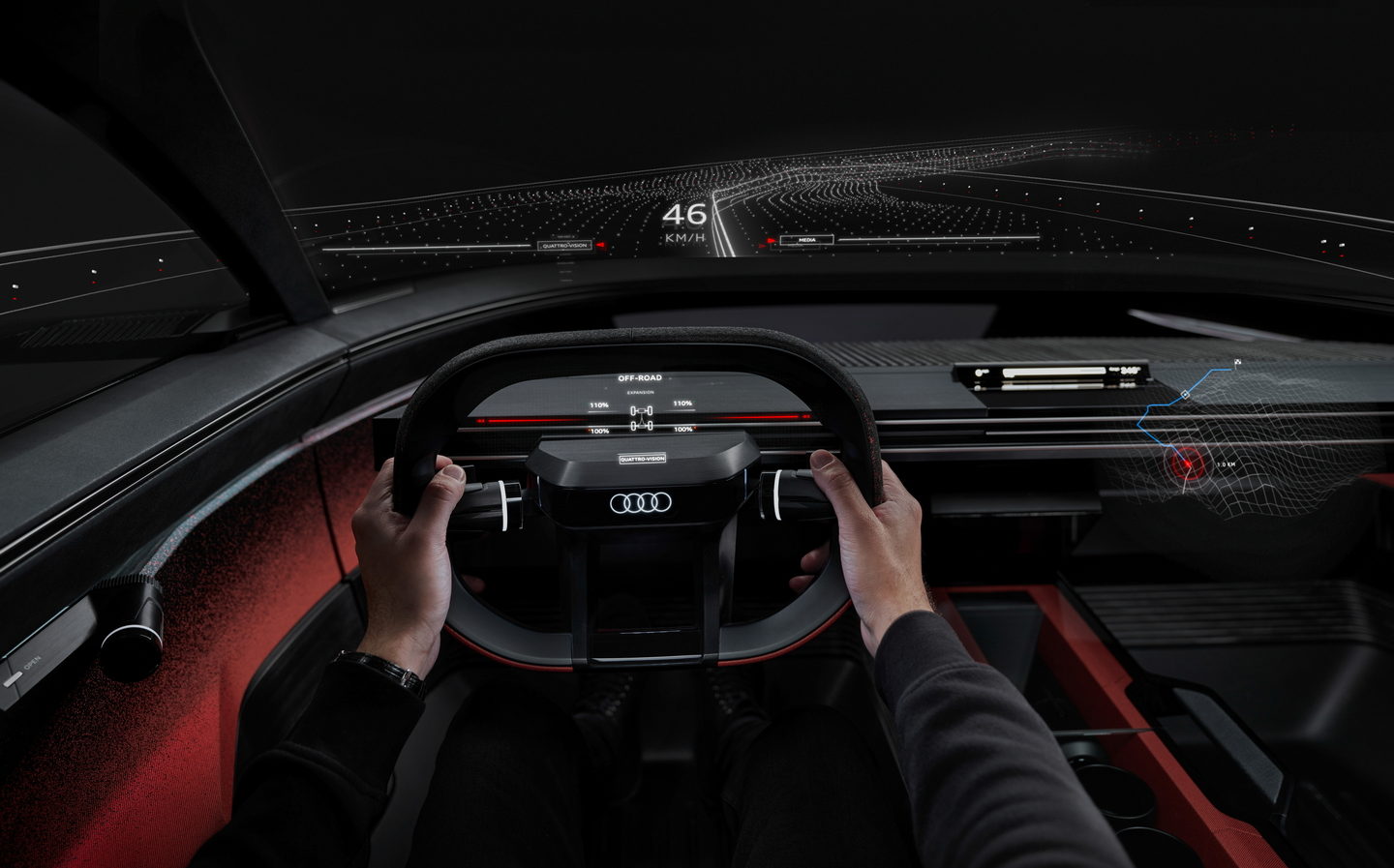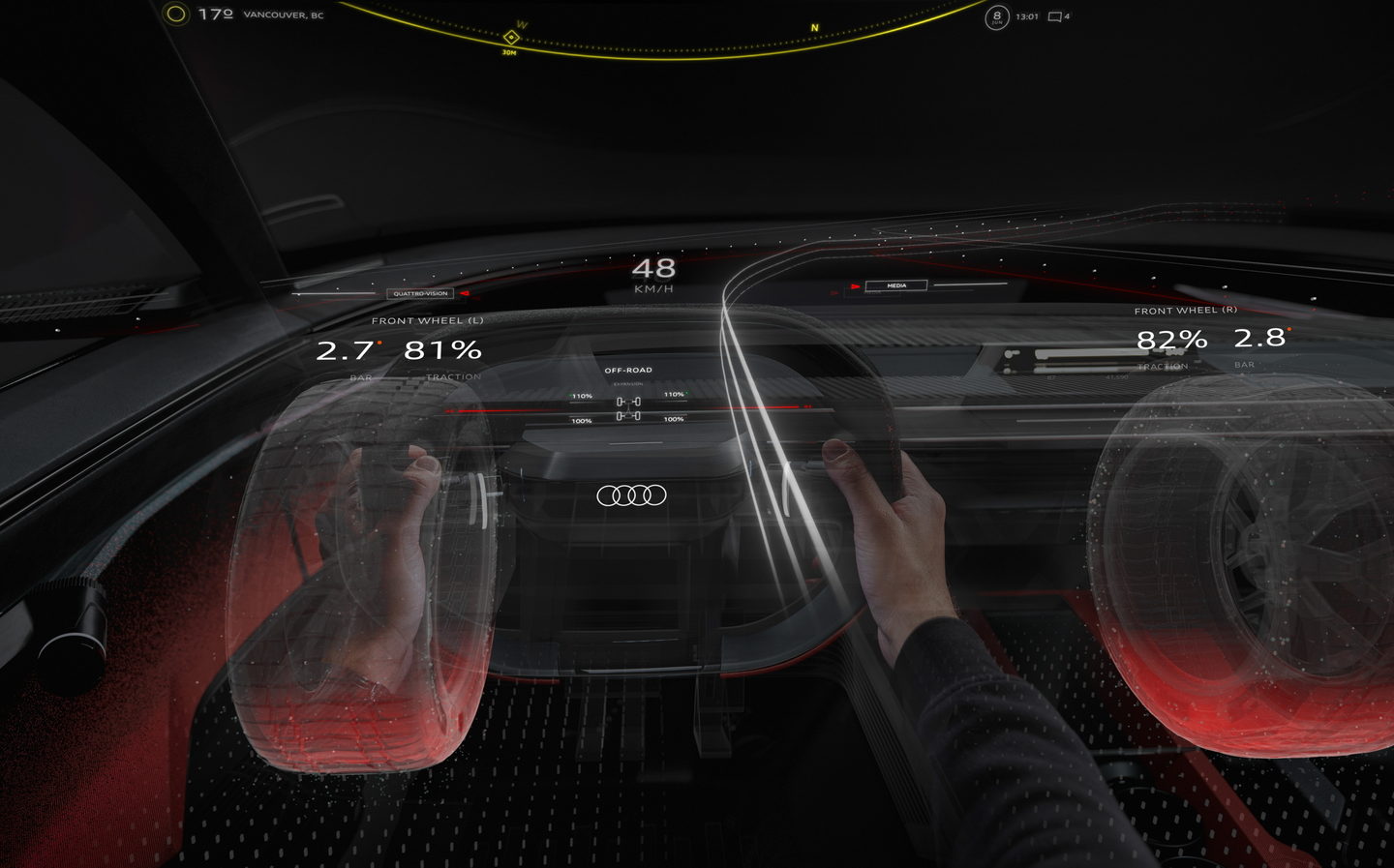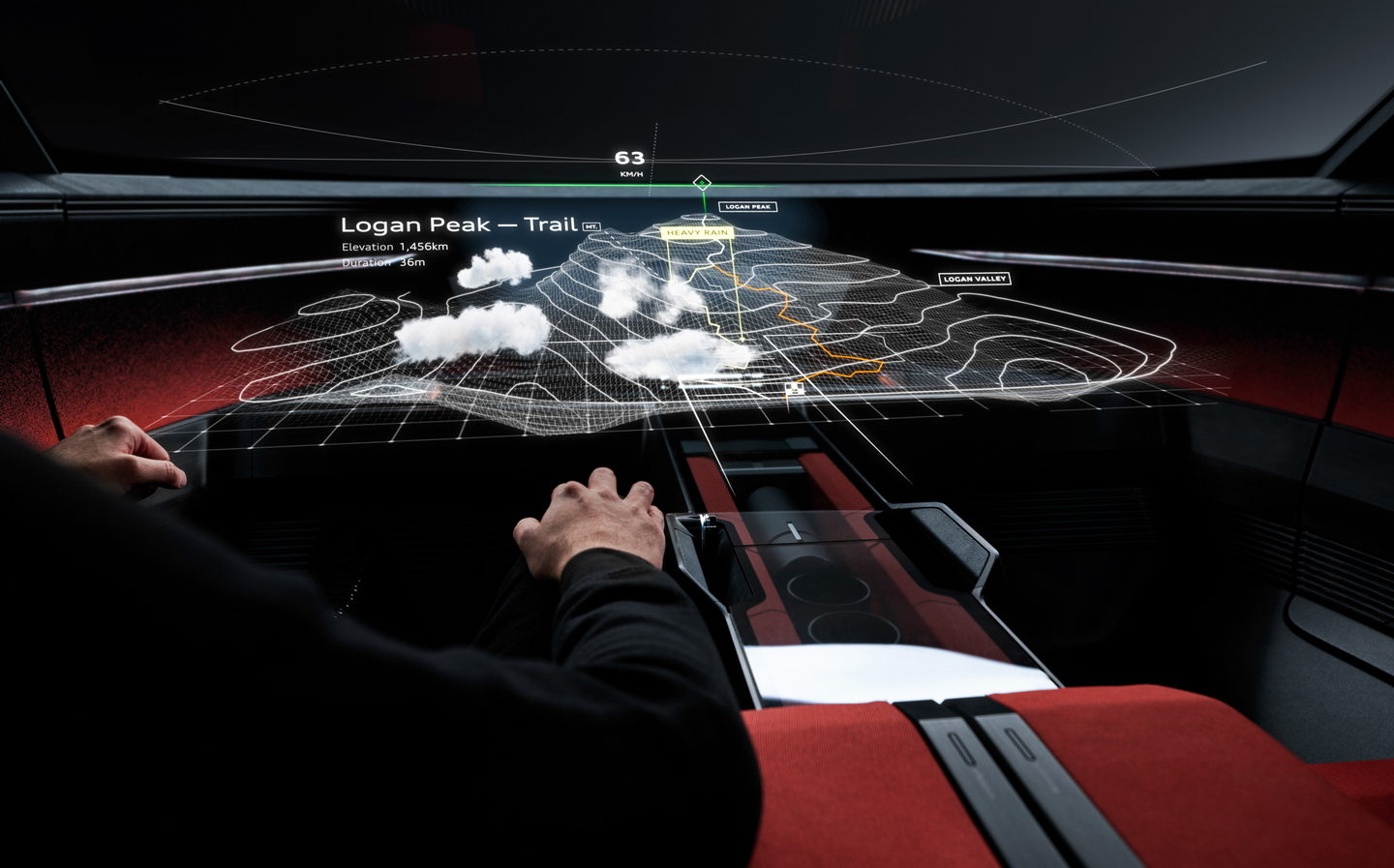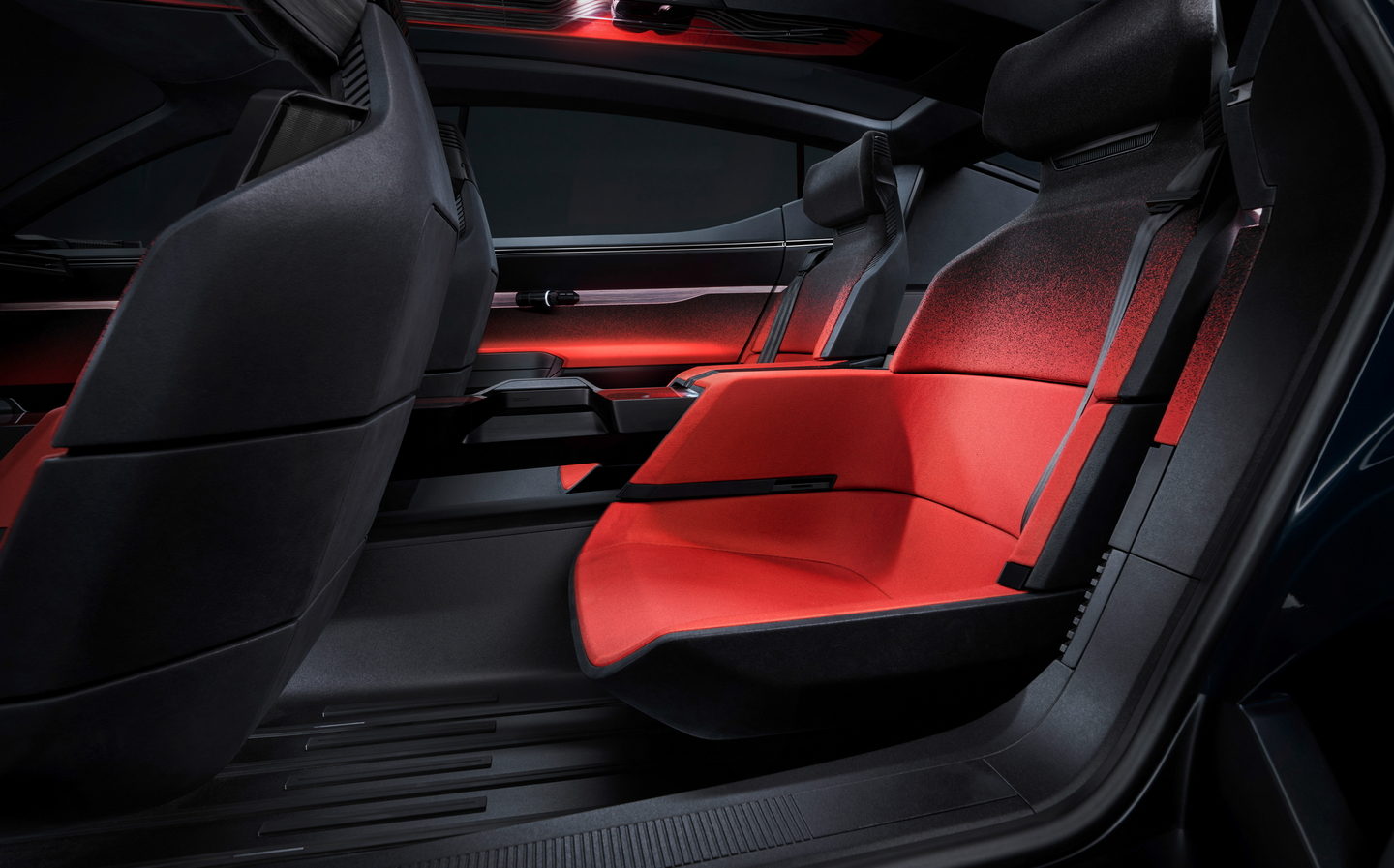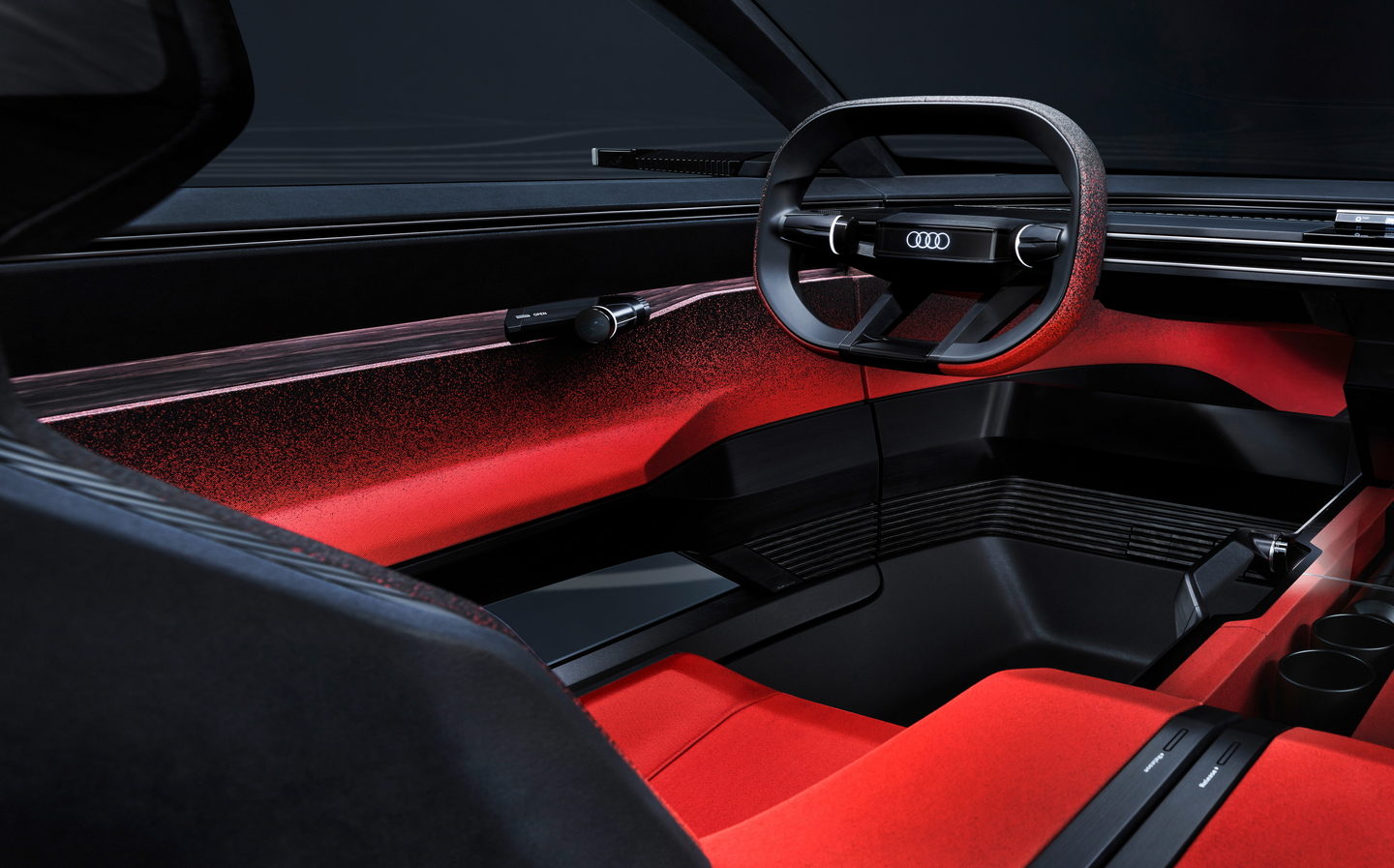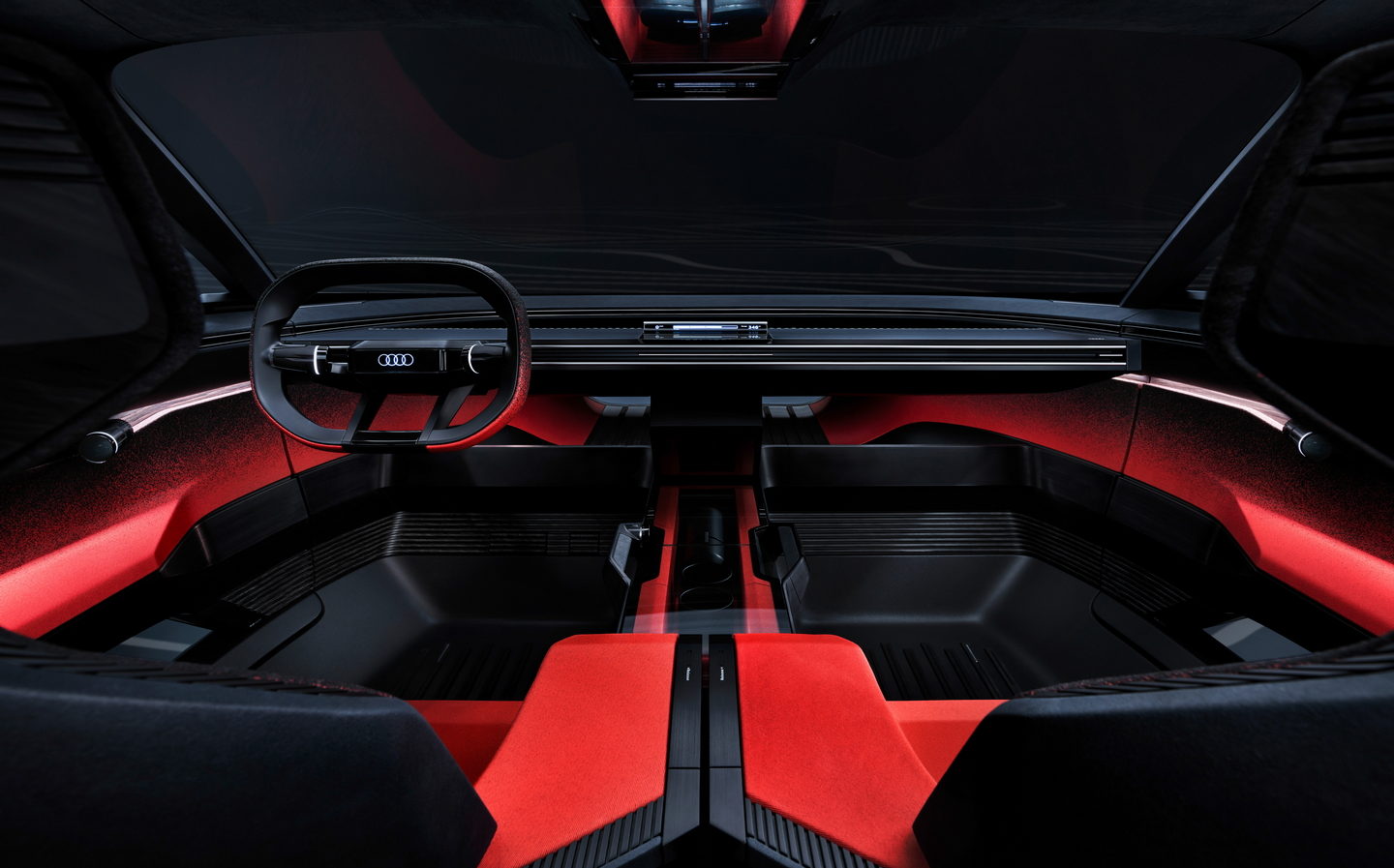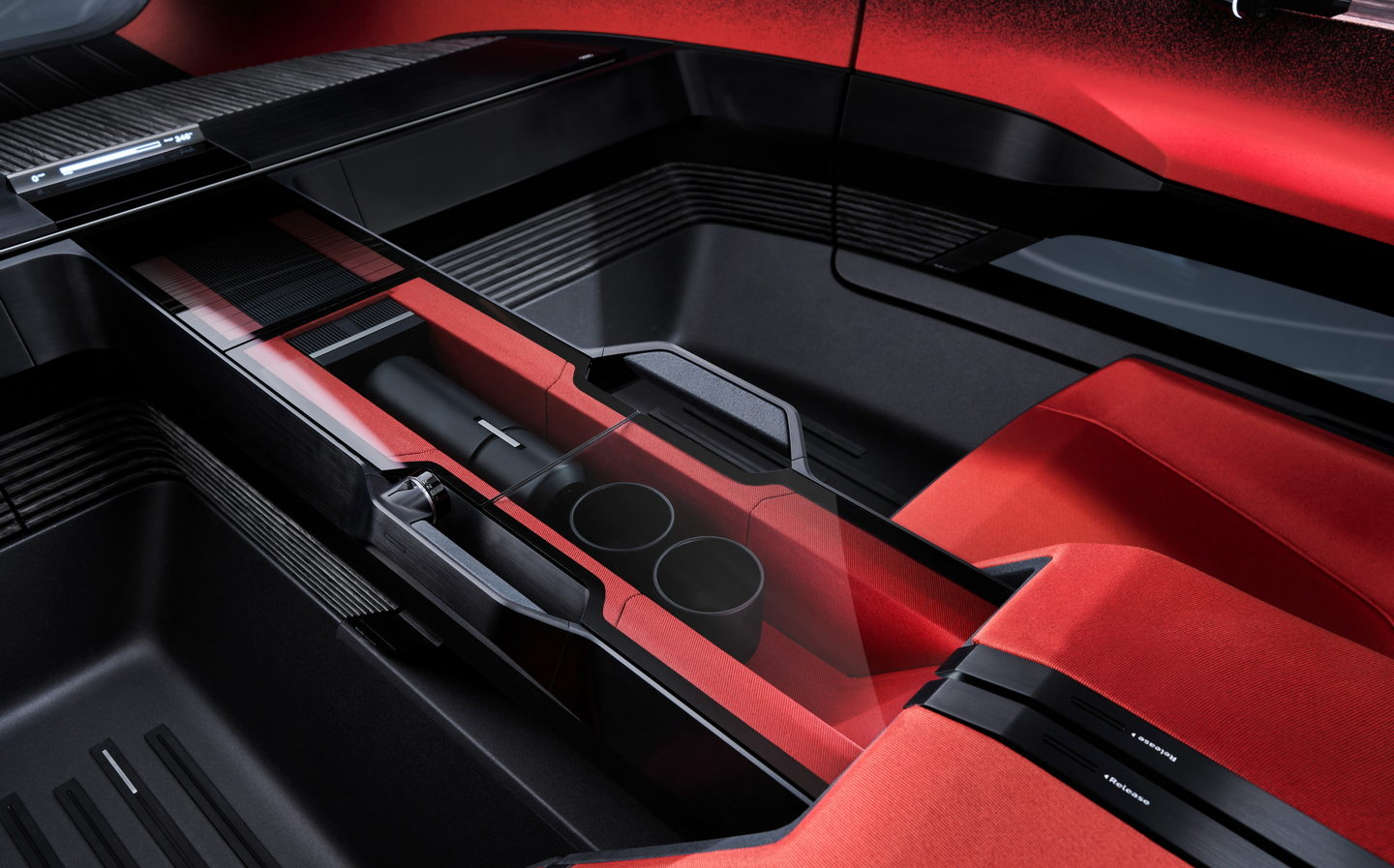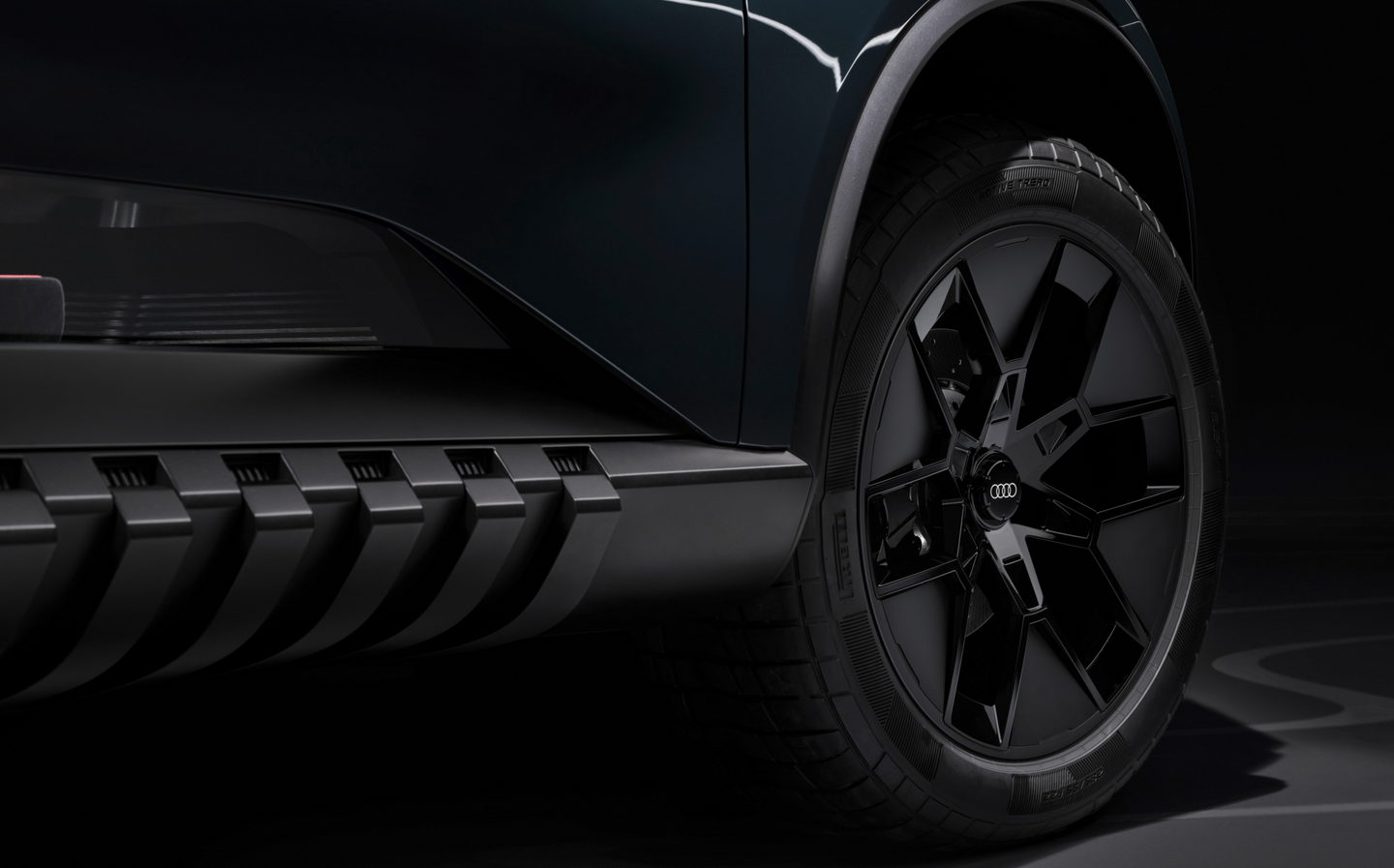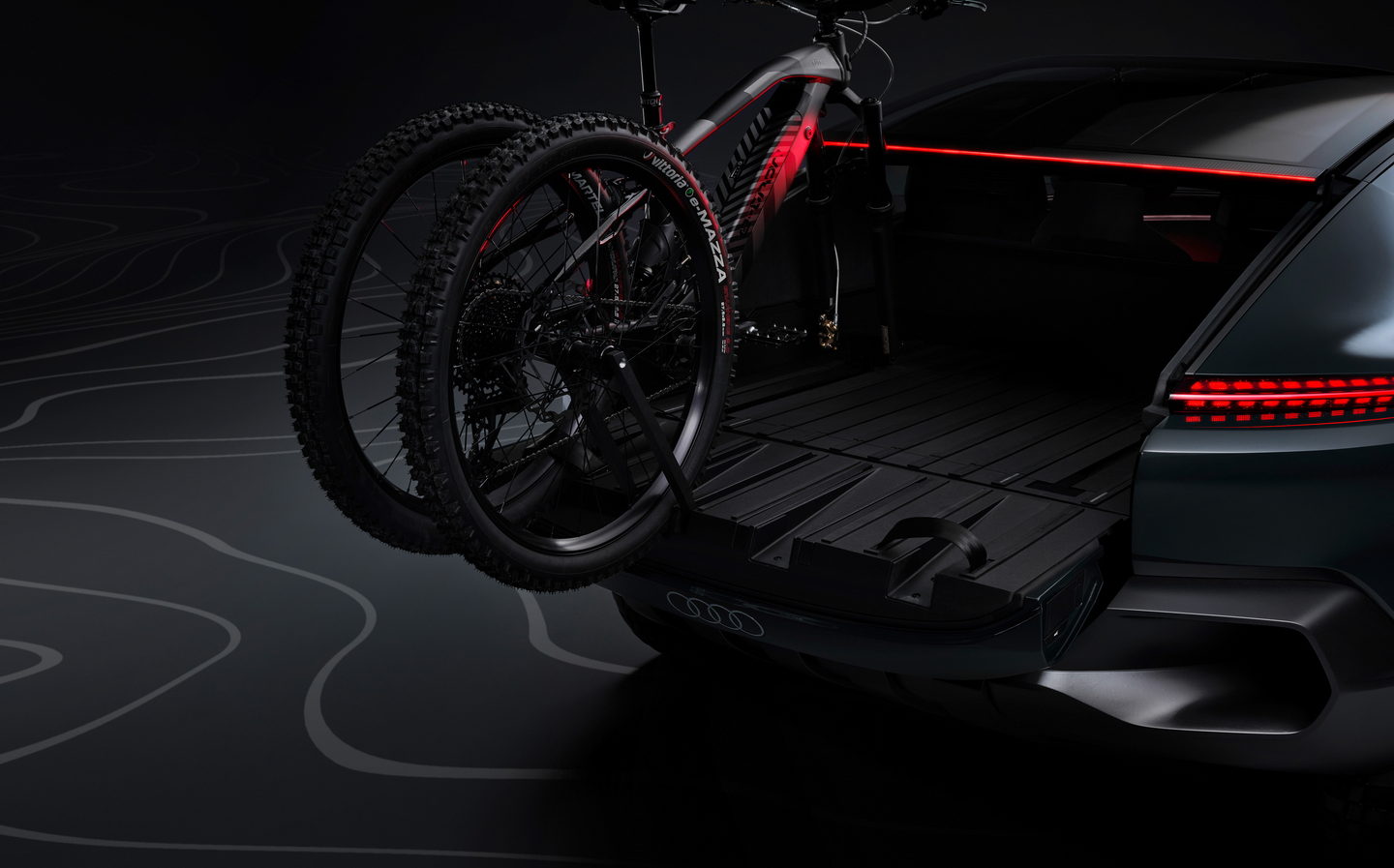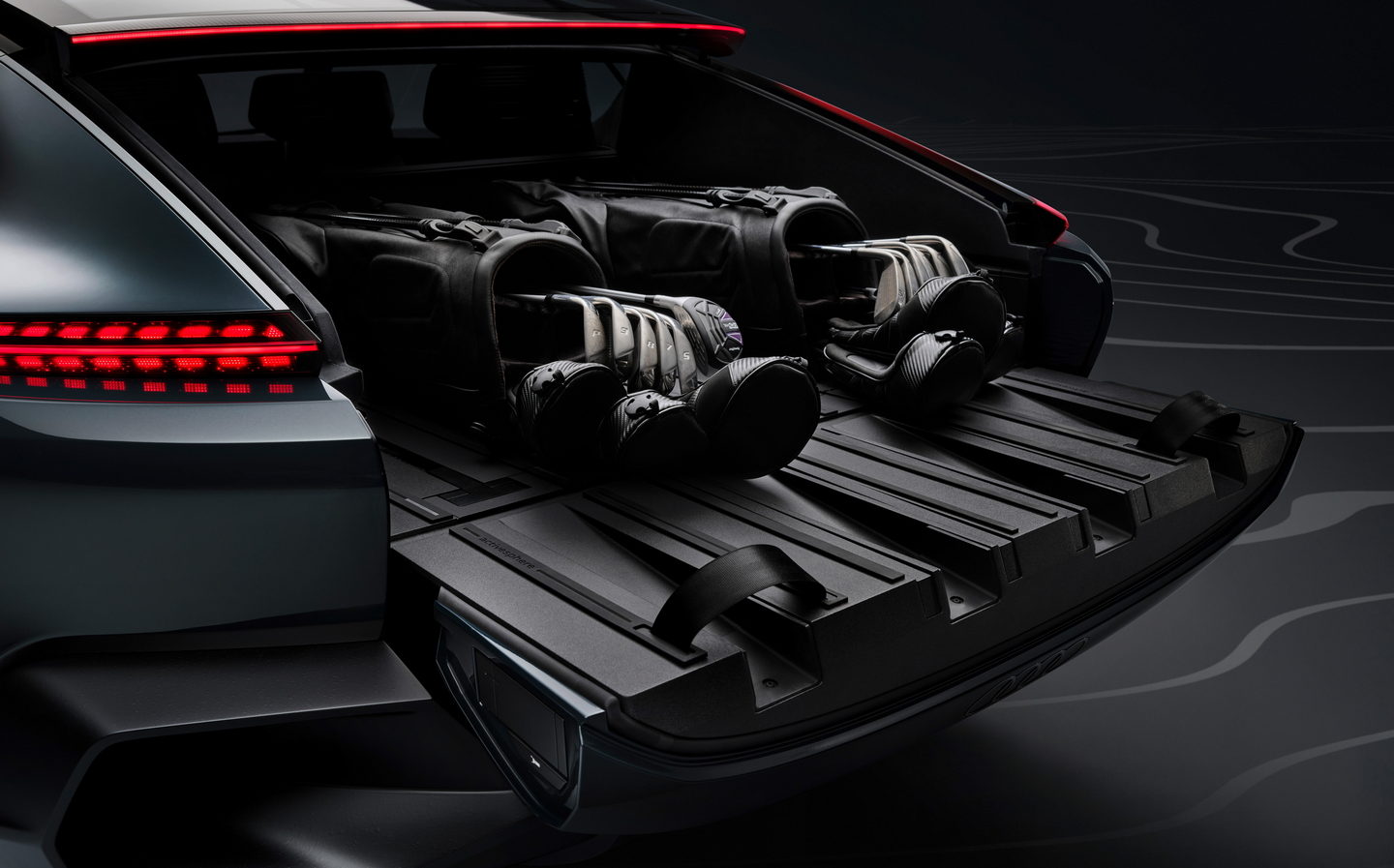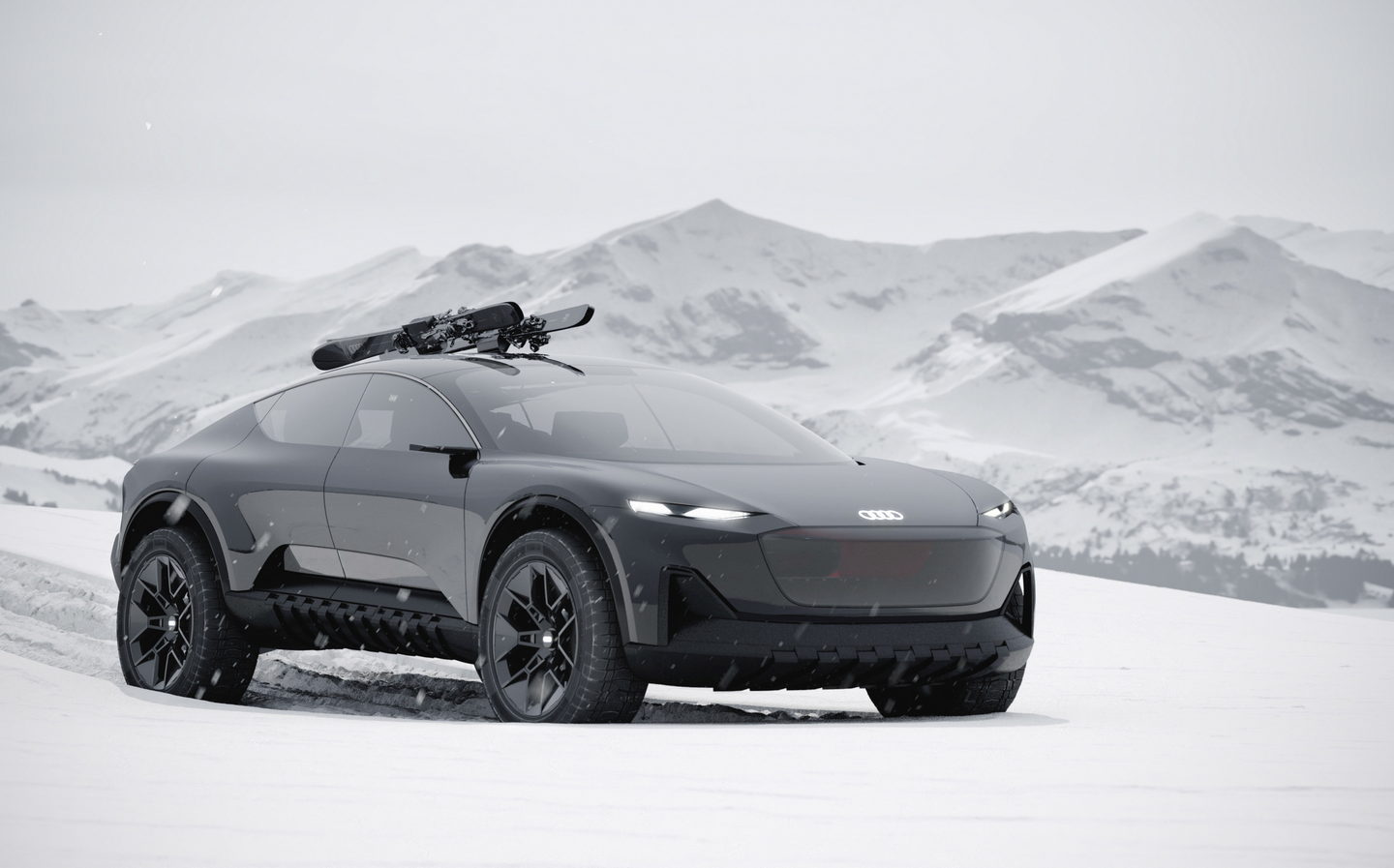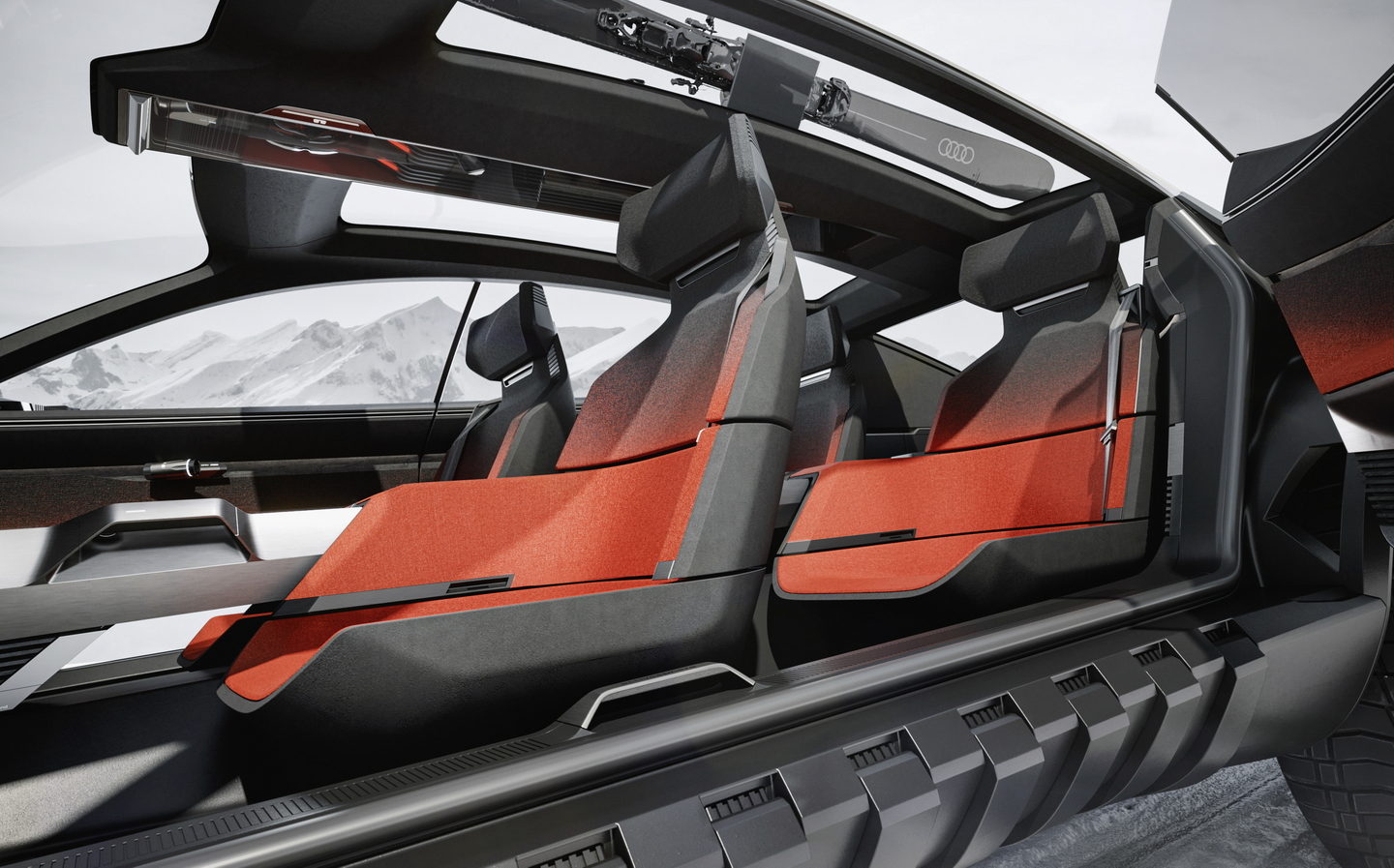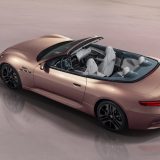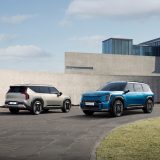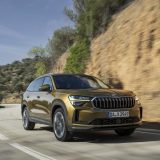Audi activesphere concept uses VR headsets in place of interior controls
Sci-fi or sky pie?
Audi has taken the covers off a new coupé-roofed concept vehicle that can not only double as a pick-up truck (though Audi doesn’t want us to use the term) but also dispenses with physical interior controls in favour of virtual reality headsets.
The Audi activesphere is the company’s fourth and final “sphere” concept exploring future technology and design themes. It follows on from the 2021 skysphere concept, as well as the grandsphere and urbansphere concepts both unveiled in April 2022.
The activesphere concept takes the form of a fastback crossover, essentially combining the attributes of an Audi Sportback and now-defunct allroad quattro models.
At 4.98 metres long and with a 2.97-metre wheelbase (the distance between the front and rear wheel centres), the activesphere shares near-identical dimensions to the company’s upcoming new A6 e-tron saloon, set for launch next year.
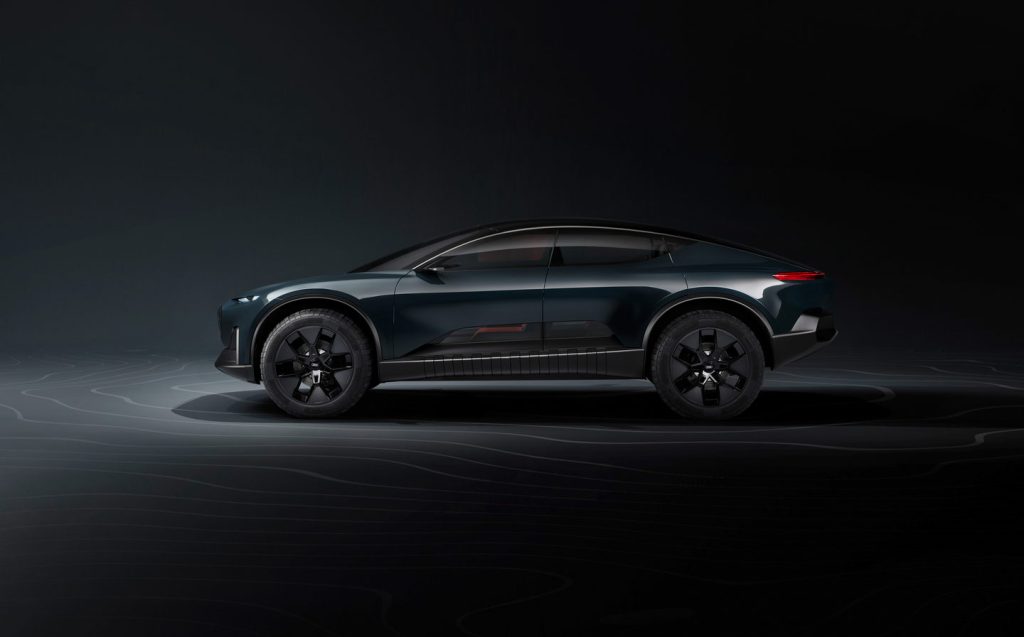
Both the concept and the A6 are based on Audi-Porsche underpinnings (known as the PPE platform), with the 100kWh battery, providing 373 miles of range, sitting in a flat pack below the floor, for a lower centre of gravity.
In the concept, Audi says the dual electric motors can jointly develop up to 436bhp and 531lb ft of torque.
With an 800-volt electrical system, rapid-charging at up to a very speedy 270kW is possible. That means 186 miles of range can be added in 10 minutes in a best case scenario.
While all of this bodes well for new Porsche and Audi models due in the next couple of years, much of the rest of the activesphere’s design appears far more futuristic.
“The activesphere is unique. It is a new type of crossover that cleverly combines the elegance of an Audi Sportback, the practicality of a SUV and true offroad capabilities,” said Gael Buzyn, manager of Audi’s Malibu design studio in California.
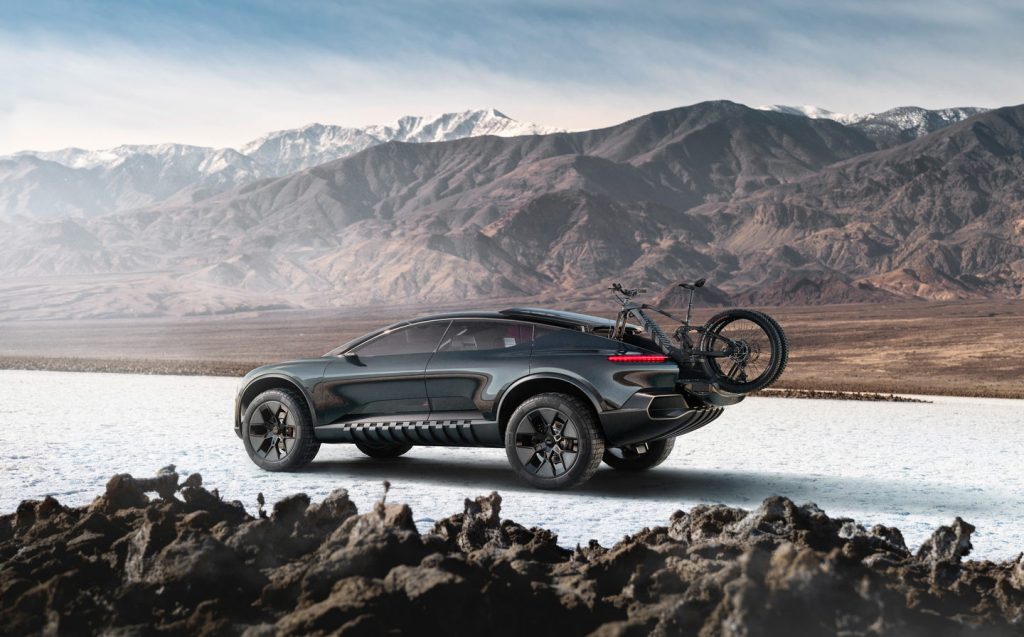
The activesphere’s exterior features several neat design cues; there’s the clear glass panel in place of a traditional grille providing a clearer view out the front when the car is in autonomous mode, for instance.
The doors are unusual, too, not just being counter-hinged but also containing cut-outs through which the interior can be seen. Meanwhile, the 22in wheels feature segments that open for greater ventilation when the activesphere is off-roading and close for improved aerodynamics when it’s on the road.
Off-roading is clearly something Audi has in mind for the activesphere, not just evidenced by the short front and rear overhangs of the design, but also by the fact that the firm has provided approach and departure angles in its press material — 18.1 degrees and 28.1 degrees, respectively. The ground clearance can also be increased or lowered by 40mm either way.
By far the biggest story when it comes to the activesphere’s body though is the rear load space, which converts into (whisper it) pick-up mode at the touch of a button.
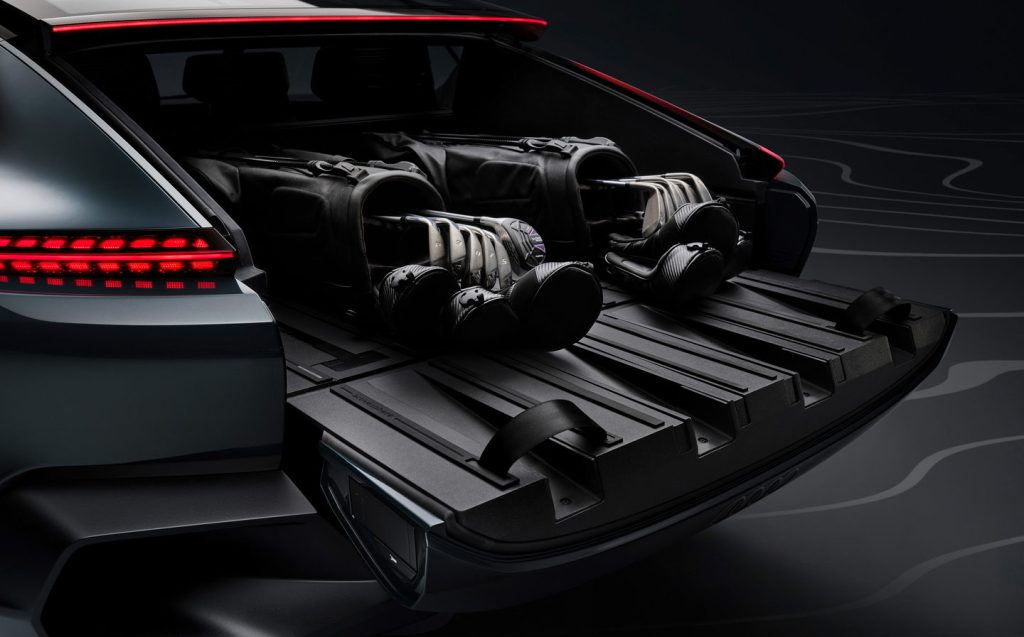
When the activesphere is in this configuration there’s little to suggest it from the side, with the concept maintaining its fastback profile, but a section of the rear folds horizontally to create a load bed, while a motorised bulkhead deploys from behind the rear seats to isolate the cabin from the elements.
The bed isn’t huge — it won’t exactly accommodate large sheets of plywood — but it does have room for a couple of bikes with brackets to secure them in place.
Also helping to put the “active” in activesphere is a ski rack on the roof that sits flush when not in use but pops up when needed.
Finished in a warm red colour, at first glance the activesphere’s interior doesn’t look especially outlandish compared with a lot of other concept cars’. The four individual seats all face forward and almost appear suspended from the prominent centre console that serves as a heated or cooled storage area for drinks, with the transparent glass top leaving bottles and glasses visible.
Ahead of the driver sits a quartic steering wheel which, as in Peugeot’s recent Inception concept, folds away along with the pedals and dashboard to provide an unobstructed view of the road ahead when the car is driving autonomously (remember, this is merely a concept).
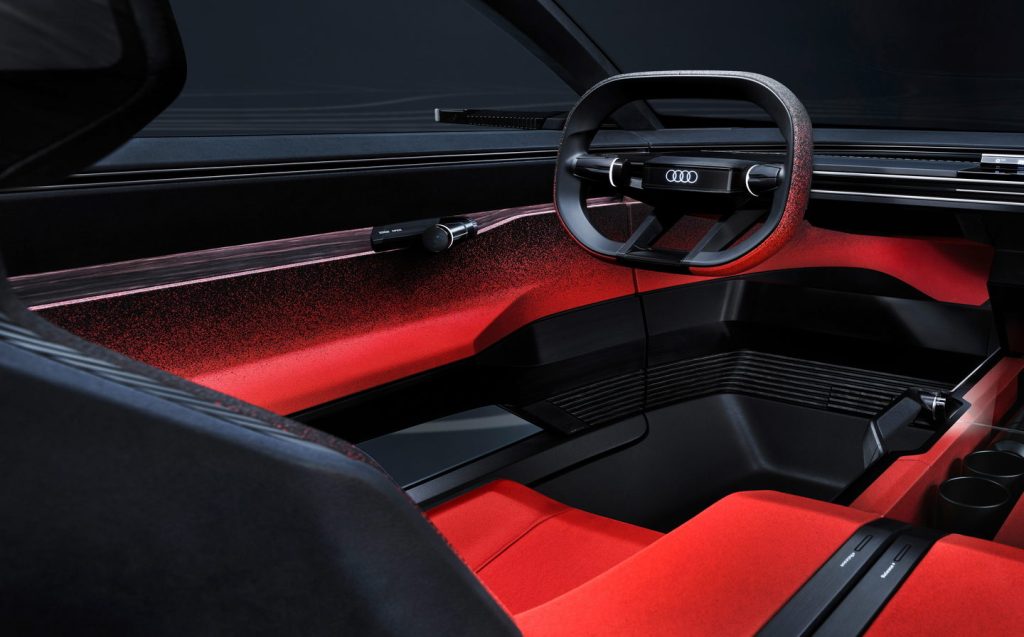
What’s especially notable about the activesphere’s interior, however, is the sheer lack of buttons — and not because they’ve all been integrated Tesla-style into one big central touchscreen.
Above each seat is a compartment containing a virtual reality headset which allows users to enter a world of “mixed reality”.
As well as being able to see the real world around them, virtual content is also projected into the wearer’s field of vision. This virtual content is largely unobtrusive until the system detects through the wearer’s eye movements that they want to learn more at which point it displays more information.
Instead of physical interior controls, the headsets show the wearer where a knob or a slider for, say, the air conditioning or the stereo volume would ordinarily be and allows them to control that virtual dial or slider through hand gestures.
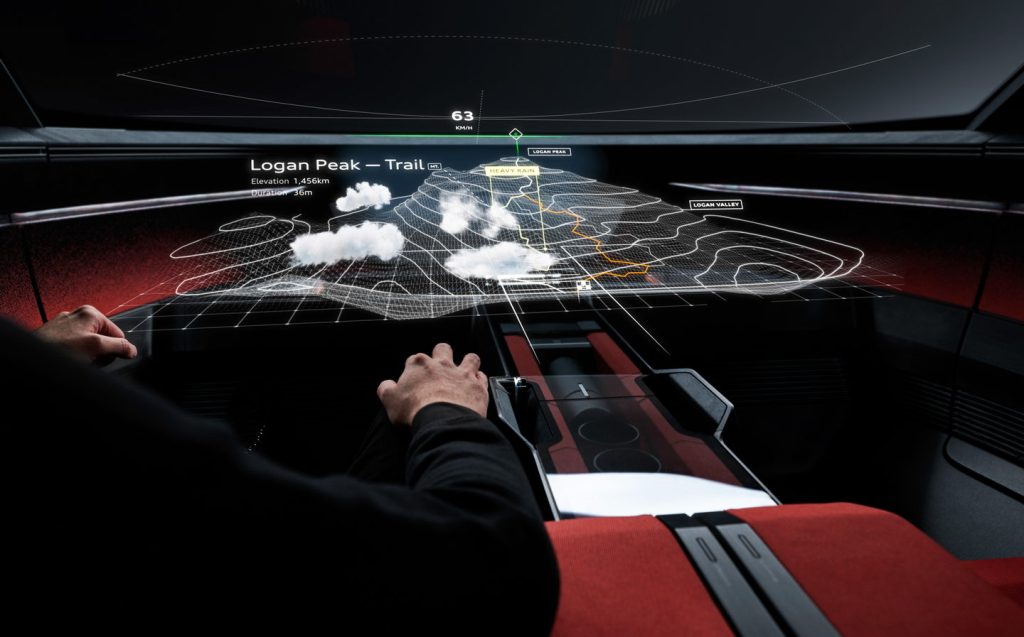
“Mixed reality optics give users the ability to interact precisely with these real, yet invisible, touch-sensitive zones,” Audi said, “as the headsets display and carry out functions by reacting in real time when users touch them.”
The information displayed through the headsets is configurable depending on who is using them, with the driver receiving information relevant to the task of piloting the car; in off-road mode, for example, high-resolution 3D topography graphics can be projected onto the real landscape and information on navigation and the destination can also be displayed.
The use of the headsets isn’t just confined to within the activesphere’s interior, though — they can be used outside the vehicle, with Audi suggesting that they could be used while skiing “to find the ideal descent” or when biking to “help navigate the bike trail”.
It’s not entirely clear whether Audi intends to take any of the activesphere’s design elements forward to production but a premium off-road-capable electric vehicle with a pick-up rear-end from the firm could provide some competition for Tesla’s Cybertruck when it eventually emerges.
Related articles
- After reading about the new Audi activesphere concept, you may also like to check out all the car makers’ electric vehicle plans
- You might also be interested in a review of the 2022 Audi A8
- Make sure you check out the massive Audi Urbansphere concept car
Latest articles
- Porsche Macan 2024 review: Sporty compact SUV goes electric, but is it still the class leader for handling?
- F1 2024 calendar and race reports: What time the next grand prix starts and what happened in the previous rounds
- Aston Martin DBX SUV gets the interior — and touchscreen — it always deserved
- Nissan unveils bold look for updated Qashqai, still made in UK
- British firm Bedeo launches new EV conversion kit for classic Defender
- New Citroën C3 Aircross gets electric power and up to seven seats
- Maserati GranCabrio Folgore is a 751bhp droptop luxury EV
- Five best electric cars to buy in 2024
- Skoda Kodiaq 2024 review: All new but business as usual for brilliant seven-seat SUV


